IPO TRACKER
A real-time look at every biotech IPO filed and the amount raised in all the world's indexes. Compiled by editor Max Gelman.
A real-time look at every biotech IPO filed and the amount raised in all the world's indexes. Compiled by editor Max Gelman.

There’s a new SPAC in Taipei City, Taiwan, and it’s looking for a partner in the healthcare and technology space. Jade Mountain Acquisition submitted its S-1 papers on Thursday, penciling in a $100 million raise. The blank check company is helmed by Moses Chen, who’s currently managing director of Taiwan-based Maxpro Ventures. He previously served as acting COO of SyneuRx International. “The company plans to target the healthcare and technology sectors, as well as technologically advanced segments of the medical, biotechnology, digital, data and data science, industrial, and financial fields,” it said in a statement.

The SPAC comes from the CEO of pharma VC firm The Balloch Group, Edward Wang. Wang plans to focus acquisition efforts on a company based in Asia, and is penciling in $50 million for the blank check raise. In addition to biotech, Wang noted he is also exploring a merger with a company in the new energy and education sectors. Current plans will center around a company valued between $150 million and $300 million. According to the S-1, the SPAC has connections to a former Chinese youth travel director, as CFO Yi Zhong served in this capacity for 16 months between 2016 and 2017. Another director, Raymond Gibbs, also spent time in the consumer goods industry.

The SPAC known as Aesther Healthcare Acquisition filed for its initial offering in July, putting down $100 million as its raise estimate. Led by Suren Ajjarapu, chief executive of online drug marketplace TRxADE Health, the SPAC is targeting pharmaceuticals, medtech and healthcare IT. Per the S-1, Ajjarapu currently controls all shares of the SPAC, but once it prices he will only own 20%. Ajjarapu got his company started back in 2010 with the goal of giving pharmacies more power in selling their prescription drugs. Based out of Land o’ Lakes, FL, TRxADE boasts of price competition with e-commerce giants like Amazon and eBay, claiming it has dozens of drug wholesalers that allow members to save tens of thousands of dollars. Much of the SPAC’s team is made up of Ajjarapu’s colleagues at TRxADE and other companies in which he serves as a board member. The TRxADE CFO is also joining as the SPAC’s finances head, and Ajjarapu has crossed paths with two other board members.

Ahead of a high-stakes Phase III readout in the second half of next year, Castle Creek is seeking to join the Nasdaq ranks. The Exton, PA-based biotech is focusing its efforts around a program called dabocemagene autoficel, or D-Fi, to treat recessive dystrophic epidermolysis bullosa, a sometimes fatal rare disease caused by a lack of collagen in the skin resulting in uncontrollable blistering. It’s a program that comes from the small acquisition of the biotech Fibrocell back in September 2019. Castle Creek has been working on rare diseases involving the skin since inception, with a former lead program in a broader epidermolysis bullosa population. But that candidate, a topical reformulation of the IL-1 beta anti-inflammatory drug diacerein, failed a Phase II study in October 2018. Co-founder Michael Derby had told Endpoints at the time that Castle Creek planned to advance the program into Phase III despite the failure, but it’s unclear if those plans ever came to fruition. Diacerein is no longer listed among the biotech’s pipeline, and its only mentions in the S-1 revolve around the old licensing agreements Castle Creek signed to re-engineer it as a topical drug. The biotech will continue to charge forward with the newer candidate, and plans to launch a second Phase III study before the end of 2021 in the dominant version of dystrophic epidermolysis bullosa

WCG Clinical Services launched back in 2012 as an ally to biopharma companies and contract research organizations, seeking to address what it calls “critical pain points” in clinical trial performance. The Princeton, NJ-based company filed an S-1 on Thursday, penciling in a $100 million raise. It claims to have supported around 90% of global clinical trials that took place over the last two years, providing services like study planning, patient engagement, and ethical review. The team participated in more than 723 Covid-19 trials, according to CEO Donald Deieso. The company aims to tackle issues like slow enrollment, “burdensome administrative processes,” and the under-representation of minority patients. WCG postponed their IPO plans on August 5.

Just over a year after completing a modest $55 million Series C round, French biotech Dynacure is looking for its own stock ticker. Dynacure was founded in 2016 as part of a partnership between Ionis and a French research center called the Institute of Genetics and Molecular and Cellular Biology. While Ionis was on the verge of an approval for its blockbuster Spinraza in spinal muscular atrophy, Dynacure was looking to use antisense to treat centronuclear myopathy — a group of disorders similarly marked by muscle wasting and weakness. The company’s lead candidate, DYN101, is currently in a Phase I/II trial in Europe, and researchers hope to expand the trial in the United States in the second half of this year, the F-1 states. Dynacure’s planning an interim pharmacokinetic and safety readout in the second half of 2022, with final data slated for 2023.

Vividion made it pretty obvious that an IPO was in the works. The Series C that Jeff Hatfield had assembled back in February bore all the signatures of a crossover: Already backed by ARCH and Versant, Vividion gathered the $135 million raise from a dream team of A-list investors. What might be surprising about the S-1 filing is the details the biotech has unveiled, for the first time, about the pipeline — especially the programs it’s developing on behalf of partners at Bristol Myers Squibb and Roche. Celgene helped put Vividion on the map back in 2018 when it paid $95 million in cash to kickstart a research pact. Up until now, Hatfield had been tight-lipped about what Celgene — now part of Bristol Myers Squibb — went with as the initial program, saying only that it’s “one of a handful of Holy Grail targets in oncology and immunology.” With the help of its chemoproteomic platform, Vividion wrote, it has uncovered a pocket on STAT3 that they can make orally available compounds against, thereby achieving “near complete inhibition” of STAT3. Vividion and BMS are looking at both oncology and immunology applications. As for Roche, Vividion noted they are developing a slate of WRN inhibitors.

This SPAC is run by Someit Sidhu, a co-founder of Pathios Therapeutics, as well as CEO of Akaza Bioscience and Izana Bioscience. Joining Sidhu on the team are Tauhid Ali, a former Takeda vet who launched three biotechs out of the pharma’s incubator, and Arnout Ploos van Amstel, former head of Novartis’ immunology, hepatology and dermatology franchises. Compared with some of the other SPACs out there, Sidhu is a relatively unknown player. He doesn’t have the name recognition of someone like Richard Branson, Eli Casdin or Vinod Khosla, nor the ostensible cult following of “SPAC King” and early Facebook executive Chamath Palihapitiya. What he does have, at least according to the SEC filing, is experience at the consulting firm McKinsey where he cut his teeth advising unnamed global pharma companies. He also holds a degree from Oxford Medical School with an emphasis on cardiology and general surgery. Sidhu’s two biotechs — whose websites, for whatever reason, are nearly identical — are partnered with Takeda and the UK government’s innovation agency. Akaza is aiming to bring an old Takeda compound through clinical trials for the treatment of acute-on-chronic liver failure, while Izana is pushing another former Takeda program in Covid-19 and rheumatoid arthritis.

Not much is known about Ocean Biomedical, but it’s kicking off its public quest with an initial $100 million raise estimate, per their S-1. The company says its business model is centered around a “licensing and subsidiary structure,” allowing them to better leverage relationships within academia and VC firms. Its CEO is Elizabeth Ng, a former director of strategy development at Merck who has also held senior positions at Gilead and BioMarin. Ocean’s pipeline currently consists of five programs ranging from oncology and infectious disease to fibrosis and inflammation. Brown University licensed their NSCLC, glioblastoma multiforme and pulmonary fibrosis candidates, while Rhode Island Hospital licensed their malaria vaccine program. The inflammation candidate is seeking to treat Covid-19 by reducing cytokines and comes from Stanford. Keeping things close to the vest, Ocean did not say how it would spend its IPO funds, only noting that one of its programs will be moving into a clinical trial with the raise. Ocean cut its expected IPO deal size by 43% on July 26.
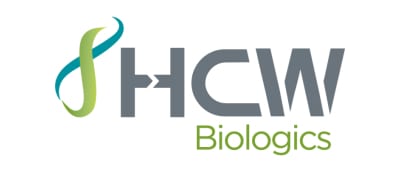
This Miramar, FL-based biotech is aiming to research the connection between chronic inflammation and aging, coining the buzzy and only-in-Florida term “inflammaging” to describe its targets. HCW has plans for four clinical trials to be up and running by the end of the year, with two already ongoing and two expected to launch. All four studies are centered around the lead candidate HCW9201, which the biotech hopes will be able to spur the generation of memory-like NK cells. The program was co-developed with researchers at Washington University in St. Louis, and the initial target indication is relapsed/refractory acute myeloid leukemia. IPO funds will go toward launching the new trials in pancreatic cancer and other solid tumor indications, in addition to preclinical studies and a Phase I alopecia areata trial for a second program.

Context is focusing on cancers found in women, including ovarian, breast and endometrial. They expect to read out Phase II results for its only clinical candidate later this year, for ovarian cancer patients who express high levels of progesterone receptor. The company is also running another Phase II trial looking at the program in combination with Arimidex in PR+ endometrial patients, with data expected in the first half of next year.

The SPAC from Cytocom CEO Michael Handley filed for a $100 million raise for its shell company on May 26. Its syndicate includes Handley and Nicholas Hemmerly, head of investment banking at Bridgeway Capital Partners. The blank-check company will reportedly focus on mid-to-late stage clinical assets.

OncoSec Medical CEO Daniel O’Connor has filed the S-1 paperwork for his blank-check company. O’Connor is a former criminal prosecutor in Somerset County, NJ, and was CEO of Advaxis before leaving the company abruptly — and without offering a reason — in 2017. He’s now leading OncoSec’s efforts to develop an IL-12 cancer therapy that’s activated by electroporation, or a series of momentary energy pulses.
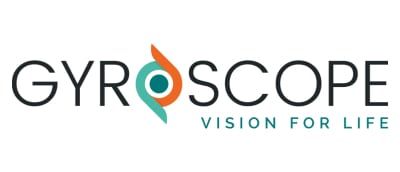
Gyroscope postponed its IPO just hours before it was due to go public, in light of “market conditions,” the company announced May 7. The company later withdrew its plans in early June. Prior to that, it had been looking to capitalize on its significant momentum from the first quarter. Back in February, the UK-based biotech posted an early win for its AMD gene therapy, noting patients who responded to their GT005 candidate in a Phase I/II trial saw a 146% increase in an important biomarker and a decrease in further downstream biomarkers. Then in March, Gyroscope took that win to the bank in closing a $148 million Series C. Less than a month later, Gyroscope is pushing forward to Nasdaq. The $100 million written out in their F-1 is likely a modest placeholder, given the nature of their Series C just a few weeks ago. The company plans to use a significant portion of its proceeds to advance GT005 in three studies, as well as fund research in another product known as GT011. GT005 is currently in two Phase II studies for patients with geographic atrophy, an irreversible degeneration of retinal cells caused by dry-AMD. The candidate is injected under the retina to increase production of the Complement Factor I protein, which Gyroscope believes could dampen an overactive complement system that’s been tied to worsening atrophy in AMD patients.
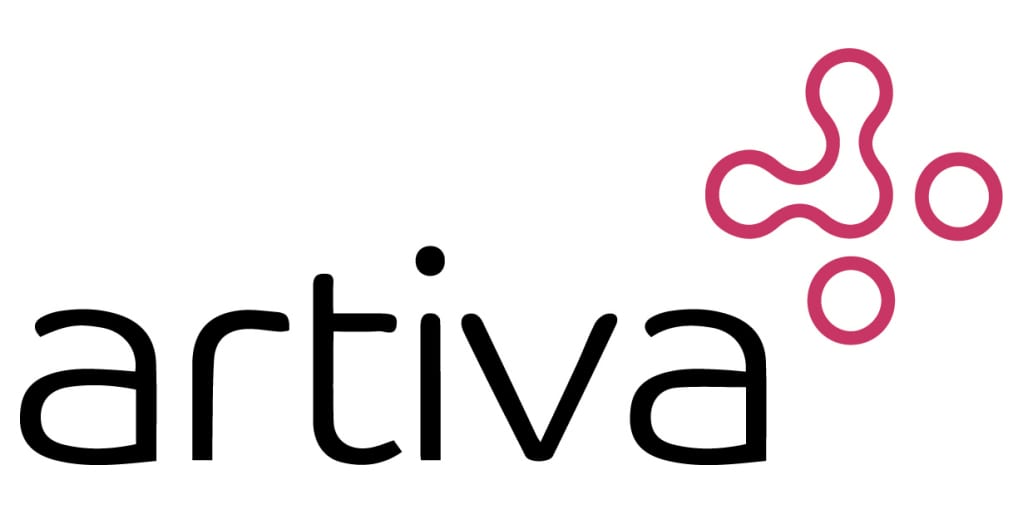
Until earlier this year, Artiva didn’t have much of a profile in biopharma land. Former Bellicum CEO Tom Farrell had assembled an NK cell therapy company, leaning heavily on a “hugely impressive” manufacturing facility belonging to Green Cross LabCell in Korea, gathered $78 million in Series A money and did the news rounds last June, then stayed largely quiet. That changed when Merck signed a collaboration worth nearly $2 billion in milestones to pick up the off-the-shelf NK cell tech. Artiva quickly followed up with a $120 million Series B, designed to kickstart Phase I/II for its lead program in non-Hodgkin’s lymphoma. The partnership deal, Artiva revealed in its S-1, gave GC LabCell a 28% stake in the biotech, almost double the holdings of 5AM Ventures, venBio, RA Capital and more than quadruple what Venrock has.

New Science Ventures rolled immune modulators from three of its startups into Ventyx. It is looking to challenge two of the big drugs at Bristol Myers Squibb — Zeposia and deucravacitinib — with its TYK2 and S1P1R programs. Its secret weapon? Sheila Gujrathi, the ex-BMS exec who had helped set ozanimod on the path to becoming Zeposia. Gujrathi had invested in Ventyx during its Series A and came on board as executive chair. Over the past few months the biotech has raised a total of $165 million.

IsoPlexis is charging ahead with its plan to personalize cancer treatment using its single-cell analysis tool to refine immunotherapies. That tool has helped researchers create what the company calls “proteomic barcode chips,” allowing closer examination of a patient’s complement of proteins within cells. Though IsoPlexis is focusing on cancer right now, they have ambitions to expand into infectious diseases, inflammatory conditions and neurological diseases, the S-1 said. The company believes the single-cell approach is key here, as it argues previous proteomics approaches focus only on average cell activity in the aggregate. Researchers utilize IsoPlexis’ systems for the analysis of functional proteins from single cells on “proteomically barcoded” chips. After the chip is run on the IsoPlexis instrument, the company runs it through a software it developed to analyze how a person’s immune system might respond to different treatments, in a process CEO Sean Mackay termed “single-cell immune landscaping” in an interview with Endpoints in January. IsoPlexis did not reveal its plans on how it expects to use IPO funds, saying only in the S-1, “At this time we cannot specify with certainty the particular uses for the net proceeds from this offering.” The biotech further didn’t reveal how much of the company each stakeholder owns, though it did say Mackay is the highest-paid director after he took home nearly $1 million last year.

The biotech arose out of an old Pfizer platform dealing with antibody drug conjugates. CEO Lara Sullivan had experience spinning out companies from the Big Pharma, having been an alum of the pharma giant’s early stage R&D portfolio operations and strategy team. Sullivan now has the biotech primed and ready to get its three ADCs into the clinic, two of which come from the Pfizer collaboration. It’s a move emblematic of many 2020 and 2021 IPOS — Pyxis is still a ways away from testing its drugs in humans, but it’s received a hefty heaping of cash to push its preclinical research forward. The lead program is an anti-fibronectin Extradomain-B monoclonal ADC, with an IND expected sometime in mid-2022. Pyxis’ theory is that EDB is overexpressed in certain solid tumors but appears far less frequently in health cells, and researchers hope to treat breast and non-small cell lung cancer patients. This candidate came from Pfizer. Pyxis’ other in-licensed candidate from Pfizer is a bit further behind, as an IND is expected in 2023. It aims to target CD123 to treat acute myeloid leukemia. There’s also a program from Korea’s LegoChem going after DLK1 in small cell lung cancer and soft tissue sarcoma.

Cognition’s lead candidate is a oral small molecule drug targeted beta amyloid in an attempt to slow the cognitive decline seen in Alzheimer’s patients. The compound binds selectively to the S2R complex, Cognition says, and is currently in a Phase II study for mild-to-moderate Alzheimer’s. The biotech is also researching the drug’s use in early Alzheimer’s, dementia with Lewy bodies and dry AMD. Cognition boasts that the program, known as CT1812, is the first S2R antagonist to reach clinical trials. Most of the IPO funds will go toward developing this program, with about $12 million slated for the Phase II Alzheimer’s study and another $16 million earmarked for a Phase II trial in dry AMD. The rest will go toward IND-enabling studies farther down the pipeline. Chief science officer Susan Catalano had the highest stake among Cognition’s C-suite at about 7%, but the S-1 says she is planning to resign as soon as Cognition closes its IPO. She’ll retain a 6.4% stake in the company.

By June 2018, the dust on Takeda’s $5.2 billion buyout of Ariad Oncology had long settled. But a group of longtime colleagues were itching to do something new with the compounds they had developed together. So they struck a deal with Ariad — as a Takeda subsidiary — to license some patents, compounds and a chemical library that would feed into a new company. In exchange, Ariad would grab a stake in the startup. And three years later, that company, Theseus Pharmaceuticals, is gearing up for an IPO. Having ushered multiple tyrosine kinase inhibitors through the clinic and toward approval together, their goal was straightforward: to develop “pan-variant” kinase inhibitors that can hit all of the known, major cancer-causing and drug resistance mutations in protein kinases.
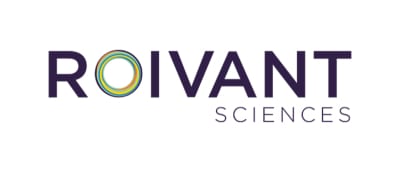
Seven years after founding Roivant Sciences as an upstart contender in the world of biotech creation, Vivek Ramaswamy and his recently anointed CEO Matt Gline flew into Nasdaq on the gilded wings of a cash-heavy SPAC. They’ve assembled a fresh $611 million in financing for Roivant — $411 million held in trust from the investors in MAAC with a fresh $200 million from the syndicate. The plan to go public fits squarely with Gline’s blueprint to firm up and expand a broad set of investors as he goes on to the next chapter in Roivant’s existence. Roivant got started with Ramaswamy, however, thanks to his philosophy that Big Pharma was spawning more promising drugs, while leaving other opportunities on the shelf. It ran into some early headwinds thanks to a stunning Alzheimer’s fail, but Ramaswamy had already booted up a string of startups, each devoted to a particular section of the global pipeline. And it’s grown considerably. Roivant’s SPAC merger closed on Oct. 1.

AI biotechs have proven largely successful at drumming up hype around their technology, and Exscientia is no different. Promising to cut down on the lengthy process that is drug development by months, if not years, Exscientia joined one of its main competitors in Recursion on Nasdaq, raising more than $300 million in its IPO. Both companies claimed to be the first to put an AI-developed drug into the clinic. Recursion did so in July 2019, even though CEO Chris Gibson readily conceded the program originally came out of Dean Li’s lab at Merck. Exscientia followed up with its announcement in January 2020, though its candidate — developed in partnership with Sumitomo Dainippon — emerged after the pair synthesized 350 compounds and tested them in a lab before deciding on one to move forward. Whether either program truly came from AI is largely beside the point, however, as both biotechs continue to enlist major partners and significant investment.

Kevin Judice tipped his hand when DiCE Molecules put out a terse release about raising $60 million in August. An enthusiastic advocate of his work on an oral IL-17 drug to rival Cosentyx and Taltz, a pair of blockbuster antibodies, Judice wouldn’t have passed up on a chance to spotlight the company. So his notable silence made it pretty clear that an IPO was in the works. Regulators demand silence in those situations, and RA’s involvement — a common feature in many a crossover — put the icing on that cake. The filing did give up some secrets on the company. Roche’s Genentech had stepped in to partner with DiCE, but we found that the deal ended in June after only $6 million in payments. Sanofi paid more, anteing up $9 million and adding $9 million more in a deal with up to $200 million in milestones. DiCE is an appropriate name for the company, as it’s still in preclinical development after focusing its lead on a well-understood inflammatory signaling pathway. But so far this year, investors have maintained a strong interest in biotechs — including those who only have animal data to report.

Based out of Carlsbad, CA, Tyra penciled in a $100 million ask, coming less than five months after it completed a $106 million Series B. But the ultimate raise proved greater than the initial estimate, coming in at $173 million. The biotech has yet to get any of its experimental drugs into human testing, with the lead program for bladder cancer expected to see an IND filing in mid-2022. Tyra’s stated goals all deal with ensuring cancer patients can continue targeted treatment should their tumors mutate or see their therapies stop working. The biotech has developed a platform it calls SNAP, which involves shooting X-ray beams to discover the three-dimensional structure of a particular protein. It’s not a new approach, but Tyra is hoping to differentiate itself with a team that repeatedly looks over the models several times per week, getting as close to an atom-by-atom perspective of its candidates’ binding process as it can. The pipeline as a whole will be targeted at the fibroblast growth factor receptor, or FGFR, family, with the lead program starting off at FGFR3.

Can a freshwater sponge be used to treat skin conditions like acne, psoriasis and rosacea? That’s what Dermata wants to find out. The company’s platform is based on the use of Spongilla lacustris, a naturally growing freshwater sponge that’s traditionally used as a folk medicine for various inflammatory conditions. However, Dermata believes Spongilla’s natural defense mechanisms could prove useful in treating skin conditions, like acne vulgaris. Those mechanisms include microscopic siliceous spicules that are uniquely sized to penetrate the skin, creating microchannels for the sponge’s naturally occurring chemicals or other macromolecules to penetrate into the dermis. The spicules are also believed to open blackheads and promote collagen production, which could accelerate rejuvenation of the skin. While Spongilla grows in rivers and lakes in the northern hemisphere, there are a limited number of places in which it grows in a large enough quantity to be used as a raw material, Dermata said in its S-1. However, the company has picked out a spot in central Russia to harvest the sponge.

Eliem Therapeutics is aiming to complete a quick rise to Nasdaq after launching at the end of March. There had been signs of an IPO after the biotech’s $60 million Series B, when company spokespeople declined interview requests ahead of the filing. Eliem likely represents one of the fastest Nasdaq pushes for biotech in recent memory, going from launch to filing for an IPO in less than four months. Should it price, Eliem will have a pipeline of four neuro assets led by a prodrug of an endocannabinoid known as palmitoylethanolamide, or PEA. The candidate is known as ETX-810, and CSO Valerie Morisset previously told Endpoints the biotech is looking at a variety of chronic pain indications. ETX-810 is currently in two Phase IIa studies looking at diabetic peripheral neuropathic pain and lumbosacral radicular pain. Data readouts are expected for the first half of 2022. Eliem is also developing a GABA-positive allosteric modulator, which the company is calling ETX-155. Researchers plan to take this program into two Phase IIa studies for major depressive disorder and hormone-related depressive disorders, as well as a Phase Ib trial for epilepsy. Data here are expected in the second half of 2022 and the first half of 2023, respectively. Both programs come from RA Capital, where the biotech was incubated.

Eli Casdin and Keith Meister’s third SPAC hopped to Nasdaq with a massive $552 million haul and priced April 7. The Casdin and Meister effort, known as CM Life Sciences III, came just a few weeks after their second SPAC announced its intent to merge with SomaLogic, one of a number of proteomics biotechs looking to understand the human body by looking at proteins rather than DNA and RNA. That deal netted the company a valuation north of $1.2 billion. On August 6, the SPAC announced it would be reverse merging with EQRx in a nearly $1.8 billion deal, which valued EQRx at $3.65 billion pre-money. The merger made it an overnight unicorn and one of the richest day-one valuations for biotech this year. The deal is expected to close in Q4. Casdin and Meister have gone all in on SPACs since the summer of 2020. Since the announcement of their first SPAC back in September, the pair have merged their first two SPACs with SomaLogic and Sema4.

Tillman Gerngross is of the opinion that he needed to start an antibody company to go after infectious diseases, with SARS-CoV-2 in his sights. He spells it out in Adagio’s S-1. He raised $470 million from some deep-pocket A-listers — in less than a year from launch — and now has the IPO in play. Though the $100 million is in as a placeholder for now, his last venture round was $336 million. The IPO offers the industry some insights on not just what he’s thinking, but how other new infectious disease players like Vir are factoring the latest wave of infections from the Delta variant now whittling down the efficacy of some of the few vaccines now approved in affluent nations. From their perspective, a blend of vaccine hesitancy and deep resistance will keep the countries first in line for vaccines vulnerable to the more powerful variants like Delta, which are already spreading like wildfire, and the pandemic will become endemic, runs the Adagio argument. Especially after the first round of antibodies from Eli Lilly quickly fizzled. For others, the IV administration makes them difficult to administer on a mass scale. Adagio wants to overcome that last part with a new antibody approach — ADG20 — that works with a single intramuscular injection. Their research team has already obtained a snapshot of activity from the Phase I, and they’re pivoting straight to the Phase II/III.

Ahead of an anticipated IND application, Immuneering — a preclinical biotech aimed at treating cancer and neurological diseases— filed its S-1 with the SEC. The company’s oncology programs target mutations of the MAPK and mTOR pathways, which run parallel to each other and get activated in more than half of cancers. Immuneering has kept a low profile through a $17 million launch round in 2019, and an additional $62 million earlier in 2021. IMM-I-104, Immuneering’s lead program, is a dual-MEK inhibitor that’s being developed to treat advanced solid tumors that harbor RAS mutant tumors. The company plans to submit the IND in Q1 of 2022.

MaxCyte is already trading on London’s AIM, but is now seeking to hop over to Nasdaq. MaxCyte’s technology uses electroporation, which applies an electric field to temporarily increase the permeability of the cell membrane and allow intracellular delivery of molecules, such as genetic material and proteins. The company went on a hiring spree in October 2020, with the promotion of Brad Calvin to chief commercial officer, and brought in Sarah Haecker Meeks to become the VP of business development and Steve Nardi to the role of VP of manufacturing and engineering operations.

After postponing its plans for a public debut back in November 2020, IN8bio says it’s finally ready for Wall Street, setting the terms for a $44 million IPO. IN8bio plans to offer 4 million shares at a $10 to $12 range. The company had initially filed in October 2020 for an $86 million raise, with plans to offer $4.7 million shares at a range of $15 to $17 apiece. It didn’t offer any explanation for the hold-up. IN8bio is working on genetically modified gamma delta T cell therapies, with two Phase I candidates for glioblastoma and leukemia, respectively. The company has tagged between $8 and $13 million for INB-200, the glioblastoma candidate, which is expected to produce topline results from a second cohort later this year. Between $1 and $2 million will be set aside for INB-100, the leukemia candidate, which is set for a topline readout from all Phase I cohorts in 2023, according to the S-1/A. INB-200, the glioblastoma candidate, is set for a topline readout in a specific cohort of patients by the end of 2021. A topline readout from all cohorts in the leukemia trial (for INB-100) isn’t expected until 2023. IN8bio also says it plans on filing three INDs between the first half of 2022 and 2023.

Flagship Pioneering’s startup Omega Therapeutics has plans to advance its lead candidate for the c-myc oncogene into human testing and establish a manufacturing footprint, capitalizing on a large fundraising round from March. The company started around the challenge of creating the massive nucleic acid sequence changes that come with gene therapy and gene editing. By sending effector proteins to what are known as dysregulated “insulated genomic domains,” Omega looks to create a controlled epigenetic programming platform for the control room of human biology. On March 30, the company from Cambridge, MA raised $126 million in its Series C financing round, putting it over $210 million since its inception in 2016. The company has five programs lined up for cancer, inflammation, autoimmune, metabolic and rare genetic diseases.

The big idea at Rani involves reformulating injectable and IV drugs into pills, which isn’t entirely a new concept. But Rani is taking a different approach with a special enteric coating that protects the medicine from the acidic environment of the stomach. Once the pill reaches the intestines as pH levels rise, the coating dissolves and a chemical reaction pushes the medicine into the intestinal walls. Rani’s lead program aims to accomplish this conversion with octreotide, an off-patent biologic that treats the hormonal disorder acromegaly. The injectable drug is currently approved by both the FDA and EMA, and the biotech saw the Phase I results it was looking for in January 2020. A 58-person study in healthy volunteers demonstrated a 65% “bioavailability” for the pill relative to the injectable. Beyond octreotide, Rani is aiming to develop TNFα inhibitors, human growth hormone peptides and GLP-1 analogs.

Back in March after raising a $106 million crossover, Tenaya CEO Faraz Ali played down the prospect of an IPO, stressing the biotech was thinking less about opportunistically jumping to Nasdaq and more on “feeling that our science has arrived.” It’s a moment where all of Tenaya’s programs are still in the preclinical phase, but at least two are expected to see INDs sometime next year, according to the S-1. That includes their lead candidate, which is targeting genetic hypertrophic cardiomyopathy due to mutations in the MYBPC3 gene. Tenaya is aiming to utilize an AAV gene therapy for treatment in both adults and children. There’s also a small molecule candidate for heart failure with preserved ejection fraction, and Tenaya will steer most of its IPO funds toward these experimental medicines. Both programs represent Tenaya’s overall mission of examining how fresh sources of regenerative cells could potentially repair a damaged heart. Most of the efforts have gone toward gene therapy, with at least three other candidates coming up behind the lead. But Tenaya is additionally looking into precision medicine and cellular regeneration approaches.

Martin Mackay got Rallybio started back in 2018 after three decades working in Big Pharma and big biotechs like Alexion. He recruited two other longtime Alexion vets following the company’s 2017 purge to launch his new biotech, with an eye on rare diseases. Mackay’s crew first disclosed their targets in May 2020, declaring a lead program for FNAIT, or fetal and neonatal alloimmune thrombocytopenia. It’s a rare condition in which a fetus has antigens on platelet cells that a mother lacks, leading to the mother’s body mounting an immune response that can potentially cause fetal brain bleeding. Rallybio is going after a preventative measure with their RLYB211 candidate, hoping to give mothers a polyclonal anti-HPA-1a antibody to tamp down on that immune response early in pregnancies. The key will be identifying at-risk patients, co-founder Stephen Uden told Endpoints at the time, as Rallybio hopes to add the screening to part of the routine rare disease tests women receive during pregnancy. Funds from the IPO raise are expected to be steered toward this program, with the S-1 noting it will be enough to complete the Phase I/II study as well as Phase I and Phase Ib trials for the subcutaneous version RLYB212 that’s expected to enter the clinic in the first quarter of next year.

Less than six months after emerging from stealth, the Deerfield-backed biotech Nuvalent is already prepping a jump to Nasdaq. It’s a big win for Deerfield, which placed a big wager on the company earlier this year in launching Nuvalent to the tune of a $50 million Series A. The blue chip firm owns more than 65% of shares pre-IPO. Nuvalent got started based on solving a problem that can sometimes occur in targeted cancer therapies, where the target is always changing. Even though newer generations of drugs can appear to hit the target, mutations will usually pop up that thwart the therapies from accomplishing their missions. Harvard professor Matt Shair, founder and head scientific advisor of Nuvalent, believes chemistry can evolve fast enough to keep pace with the diseases, he told Endpoints News in January. While in stealth, he pushed the biotech to utilize structure-based drug design to develop two compounds that target the tumor drivers ROS1 and ALK for the clinic. That approach, Shair said, is complemented with Nuvalent’s efforts to seek out physician input for what kinds of properties they want in a drug. Both programs have yet to reach their first in-human studies, but IPO funds are expected to help launch Phase I portions of planned Phase I/II studies for each candidate and push them through to completion.

Icosavax’s technology comes out of Neil King’s lab at the University of Washington, where his team built on years-old research of how some viral proteins could spontaneously assemble themselves. Their work resulted in what’s essentially a virus-like particle shaped like a soccer ball — the “white” parts making up the structure and the “black” spots representing the displayed antigens, King told Endpoints in April. It’s the same tech King is using to develop a “super-seasonal” flu vaccine with the NIH, though Icosavax is not involved in that research. The biotech’s bivalent vaccine program, which will soak up most of the IPO cash, is going after respiratory syncytial virus and human metapneumovirus. Icosavax’s plan is to start with the RSV “soccer ball” and then layer the hMPV vaccine on top of it as the new funds will help complete a Phase IIb study for the program. It’s not yet clear when the data from this candidate will be ready, however, as it’s not expected to begin a Phase I study until the second half of 2022. Other IPO funds will be directed toward the biotech’s Covid-19 vaccine, with Icosavax looking to wrap up a Phase I/II trial thanks to the incoming windfall.

For close to two decades, the company that would eventually become Candel Therapeutics had worked under the radar on oncolytic viruses. But now that it’s emerged from stealth with a new name, wooed GlaxoSmithKline vet Paul Peter Tak to be CEO and set its first Phase III to sail, it is making good use of the limelight. Oncolytic viruses come with a checkered history. Amgen’s Imlygic remains the only approved product in the space, standing out among a slew of failures. Still, Candel — and they’re not alone — reckons it represents “one of the most promising cancer treatment modalities today.” The core idea is elegant: If you can direct a non-replicating virus to tumors, you can kill some cancer cells and cause enough damage to startle the immune system into action, both at the local site and to metastases. Candel’s pitch is to find the optimal virus to achieve this while adding a twist: use the virus as a vector to deliver transgenes for an enzyme, which would then convert a companion small molecule prodrug into cancer killing mode. Having bagged a modest $66.1 million from venture rounds — and burned through $48.6 million by late March — Candel plans to channel the IPO proceeds directly into those trials and future ones, as well as building a new manufacturing facility. Candel lowered its IPO deal size by 15% on July 26.

Caribou got its start in Jennifer Doudna’s lab at Cal-Berkeley, where CEO Rachel Haurwitz was Doudna’s first graduate student to work on CRISPR. In 2011, they launched the company with James Berger, who’s now at the Johns Hopkins School of Medicine, and Martin Jinek. What the company says sets it apart is its hybrid DNA/RNA editing platform, which Haurwitz calls chRDNA (pronounced “chardonnay,” like the wine). The biotech believes the hybrid guides can prevent off-target editing common to current CRISPR applications. Some of the IPO proceeds will go to IND-enabling activities for Caribou’s other two candidates, CB-011 and CB-012. The former targets BCMA for the treatment of relapsed/refractory multiple myeloma and uses “immune cloaking” to avoid the immune system. That candidate is expected to hit the clinic next year. CB-012 goes after CD371, which Caribou says is an attractive target for acute myeloid leukemia. The company is also looking to go beyond oncology, and they’re exploring the areas of immune cell therapy, iPSC, and in vivo-gene editing. In February, AbbVie shelled out $40 million upfront with another $300 million in biobucks for two of the biotech’s allogeneic CAR-Ts.

Sophia’s IPO marks the end of a long journey in the private sector for CEO Jurgi Camblong, who spent most of the biotech’s first nine years going from one small raise to another. But with the industry push toward big data and genomics, Camblong is positioning Sophia to be a standout AI partner for drug developers. The ultimate goal is to “be in the position of Google,” he told Endpoints at the time of Sophia’s October 2020 raise. And while his pitch strikes a familiar tone of being able to aggregate and sort through mountains of new data to provide clinical insights, Sophia is aiming to differentiate itself based on its sheer size. Throughout the last decade, Sophia has listed at least 1,000 hospitals as already using their platform to track patients, including hundreds in the US. The infrastructure that’s in place can further provide real-world data rather than simply focus on genomics, though Camblong noted their biopharma business is still very new after launching in 2019.

CEO Sean McClain started Absci as a 22-year-old college graduate in a small basement lab — or as he called it, a “dungeon lab” — in downtown Portland, OR. Ten years later, he’s taking the company public. What started as McClain’s search for a more efficient way to manufacture proteins in E. coli has led to the biotech’s protein printing platform, which the team hopes can shorten the R&D process. They’ve moved out of the basement lab, and McClain said back in April that he plans to increase the staff to 225 by the end of this year. Absci went commercial in 2018 with its E. coli expression platform, SoluPro, for producing soluble, complex proteins in high yields. The following year, it introduced its protein printing platform, which builds on SoluPro with technology designed to pump out high-diversity strain libraries and high-throughput screening assays. Absci landed a $125 million crossover round back in March, and plans on using the IPO proceeds to expand its platform, according to an S-1 filing. The biotech has partnered with more than a dozen companies, ranging from Merck and Astellas to a host of smaller players.
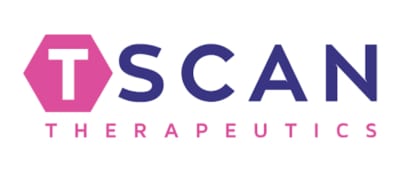
TScan’s planned leap to Nasdaq is coming just three months after the biotech pulled in a nine-figure crossover round in January, which attracted high-profile firms BlackRock and RA Capital Management. The Harvard University spinout is building a repository of clinically-active TCRs using its high-throughput whole genome discovery platform. The company had compared it to a vending machine or a library of sorts, before finally settling on the term “bank,” CEO David Southwell said at the time of the crossover. TScan’s approach comes from the lab of Harvard professor Stephen Elledge, who set out years ago to screen antigen-TCR matches in a faster, more systematic way. He spent 7 years putting together the tech for a platform that could run multiple TCRs against antigen epitopes and pinpoint the exact pairs that appear to interact. Now, what began as 96 plates in Elledge’s lab has transformed into a company that has raised $180 million to date and attracted the likes of Novartis. The biotech plans to submit INDs for its lead two liquid tumor candidates in the fourth quarter, and at least three of its four solid tumor candidates in the second half of 2022.

Back in November, Imago pulled in an $80 million crossover round that CEO Hugh Rienhoff said would lead to a public debut sometime this year, and that came to fruition in late June. They’re looking to create small molecules that target lysine-specific demethylase 1 (LSD1), an enzyme that plays a role in the production of blood cells in the bone marrow. The company read out positive Phase II results in mid-June for its lead candidate, bomedemstat, in bone marrow cancers. In the study, 10 out of 12 patients with essential thrombocythemia, a rare disorder in which the body produces too many platelets, dosed for more than six weeks showed a significant reduction of platelet counts. The drop happened while patients maintained stable hemoglobin levels, the company said. And in a separate study in patients with advanced myelofibrosis — a type of bone cancer that disrupts the body’s normal production of blood cells — 94% of patients showed a reduction of 50% or more in symptoms. Upon unveiling the company’s Series C in November, CBO Ed Baracchini told Endpoints News that the best-case scenario would be to launch both Phase III studies in mid-2022. According to the S-1, Imago plans on developing bomedemstat and other LSD1-targeting candidates for other indications such as polycythemia vera, hemoglobinopathies and solid tumors.

Prenetics will reportedly hop onto Nasdaq through a SPAC, CNBC reported on July 15, in a deal that will value the biotech at $1.3 billion. Founded by entrepreneur Danny Yeung, Prenetics will reverse merge with the SPAC Artisan Acquisition, which comes from the CEO of the Hong Kong conglomerate New World Development. In the deal, Prenetics will get the $339 million raised in the SPAC, as well as another $60 million in PIPE financing. The merger is expected to be completed by the end of 2021, CNBC reported. Prenetics could not be reached for comment. News of the deal came from an anonymous CNBC source, who requested not to be named to discuss the information publicly. The biotech has garnered significant publicity since the start of the Covid-19 pandemic thanks to its testing kits. Yeung, who serves as the CEO, has previously boasted that Prenetics’ Covid-19 kits are comparable in accuracy to lab-based PCR tests, better than antigen testing and can return results in 30 minutes. Its tests, developed by University of Oxford researchers, use a technique involving loop-mediated isothermal amplification, according to a CNBC report from November. Earlier in the pandemic, Prenetics distributed tests in Hong Kong’s airport and soon moved to London’s Heathrow Airport. It’s reportedly in discussions with other governments to expand testing to other airports.

Almost a year after expanding an already massive Series B round, Erasca has filed S-1 papers in the hopes of advancing its namesake mission: erasing cancer. CEO Jonathan Lim launched the company back in 2018, after auctioning off his company Ignyta to Roche for a tidy $1.7 billion. For the first couple of years, Lim released few details on what the company was working on. Then at the beginning of this year, he unveiled two programs targeting proteins in a key cancer signaling pathway called RAS/MAPK. Erasca’s two clinical programs include ERAS-601, licensed from NiKand Therapeutics, and ERAS-007, acquired from ASN Product Development. They both target the RAS/MAPK pathway, which is behind as many as half of all solid tumors, according to Erasca. When the pathway becomes overactive, cancer cells can grow in an uncontrolled fashion. ERAS-601 and ERAS-007 inhibit SHP2 and ERK, respectively: two proteins that act as “on/off switches” to the RAS/MAPK pathway. By targeting the proteins and clamping down on the signaling pathway, scientists believe they can turn the RAS/MAPK switch “off,” shutting down cancer cells’ ability to grow and proliferate. The plan is to have four candidates in the clinic within the next six quarters, and file an additional IND every 12 to 18 months over the next five years.

Perceptive’s Joseph Edelman is no stranger to the holding companies that have now come to dominate the market,, as Arya V priced to become the firm’s fifth SPAC. The SPAC will target North American and European life sciences and medical technology companies in the $300 million to $500 million range with the potential for $1 billion or more in market cap, Perceptive said in a release. Perceptive is, of course, no stranger to blank-check companies, having taken four previous iterations of ARYA onto Nasdaq, most recently in February. That month, Arya IV priced at $130 million and has yet to find its forever partner. Meanwhile, the previous iteration, Arya III, reverse merged with Nautilus Biotechnology in February in a deal worth $350 million with the SPAC’s trust and PIPE funding included.
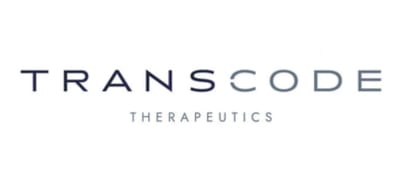
Founded and led by CRO vet Michael Dudley, Boston-based TransCode Therapeutics is focused on delivering RNA drugs to where they are needed to kill cancer, and they are ambitious. All of their programs are still in the preclinical stage, with the lead candidate designed to treat metastatic cancer — meaning tumors in the breast, pancreas, ovary, colon or even the brain. According to the company’s S-1, TransCode’s strategy seeks to overcome delivery challenges by repurposing a particle, which are used extensively in humans for imaging purposes, to deliver synthetic RNA molecules to cancer cells. TransCode is also developing a PD-L1 that they’re hoping to use for pancreatic cancer, melanoma, NSCLC and breast cancer. For their next step, the company intends to advance the lead program to the clinic for those suffering from late-stage cancer. In March 2020, TransCode received FDA guidance for their first proposed study as part of its pre-IND submission. TransCode set its terms on May 4 and slashed its valuation by about 41%, per Renaissance Capital.

Acumen Pharmaceuticals is a secretive player, but given its research into Alzheimer’s disease, they could be under the spotlight more frequently following the FDA’s controversial decision to approve Biogen’s Aduhelm. Acumen’s research deals with amyloid-beta oligomers, and it notes in its S-1 — perhaps nodding to the Biogen decision — that “based on decades of research and supporting evidence, AbOs have gained increasing scientific acceptance as a primary toxin involved in the initiation and propagation of AD pathology.” The company noted the distinction between amyloid-beta monomers and amyloid plaques as well. This research has culminated in a monoclonal antibody called ACU193, co-developed with Merck, which launched a Phase I trial in the second quarter. Acumen is looking for potential effects in early-stage patients, seeking to enroll those with mild dementia or cognitive impairment in its study. Data are expected by the fourth quarter of next year. Going further than Ocean, Acumen gave exactly zero details over how it would use the IPO raise. The “Use of Proceeds” section of their S-1, while typically scant on specifics, unusually contains only boilerplate language in Acumen’s filing.

This SPAC comes from the outspoken “Piped Piper of SPACs,” Chamath Palihapitiya. A former Facebook executive and co-owner of the NBA’s Golden State Warriors, Palihapitiya launched four SPACs all targeting different sectors of biotech. Palihapitiya has been a prominent and influential figure in this realm, having previously launched a slate of six SPACs spanning multiple industries. Four of his firms have found partners thus far, including one that took fellow billionaire Richard Branson’s space tourism company Virgin Galactic public. He’s only grown his influence since the start of the Covid-19 pandemic, cultivating a large audience of stuck-at-home millennial and Gen Z retail investors through his Twitter account and a popular weekly podcast. One of Palihapitiya’s other SPAC-backed companies, Clover Health Investments, has also seen recent interest from Reddit investors, but was the subject of an investigation from Hindenburg Research in February, alleging Clover and Palihapitiya misled retail investors in the run-up to the public transition. His first SPAC will look for biotechs working in neurology.

This SPAC comes from the outspoken “Piped Piper of SPACs,” Chamath Palihapitiya. A former Facebook executive and co-owner of the NBA’s Golden State Warriors, Palihapitiya launched four SPACs all targeting different sectors of biotech. Palihapitiya has been a prominent and influential figure in this realm, having previously launched a slate of six SPACs spanning multiple industries. Four of his firms have found partners thus far, including one that took fellow billionaire Richard Branson’s space tourism company Virgin Galactic public. He’s only grown his influence since the start of the Covid-19 pandemic, cultivating a large audience of stuck-at-home millennial and Gen Z retail investors through his Twitter account and a popular weekly podcast. One of Palihapitiya’s other SPAC-backed companies, Clover Health Investments, has also seen recent interest from Reddit investors, but was the subject of an investigation from Hindenburg Research in February, alleging Clover and Palihapitiya misled retail investors in the run-up to the public transition. His fourth SPAC will look for biotechs working in immunology.

This SPAC comes from the outspoken “Piped Piper of SPACs,” Chamath Palihapitiya. A former Facebook executive and co-owner of the NBA’s Golden State Warriors, Palihapitiya launched four SPACs all targeting different sectors of biotech. Palihapitiya has been a prominent and influential figure in this realm, having previously launched a slate of six SPACs spanning multiple industries. Four of his firms have found partners thus far, including one that took fellow billionaire Richard Branson’s space tourism company Virgin Galactic public. He’s only grown his influence since the start of the Covid-19 pandemic, cultivating a large audience of stuck-at-home millennial and Gen Z retail investors through his Twitter account and a popular weekly podcast. One of Palihapitiya’s other SPAC-backed companies, Clover Health Investments, has also seen recent interest from Reddit investors, but was the subject of an investigation from Hindenburg Research in February, alleging Clover and Palihapitiya misled retail investors in the run-up to the public transition. His second SPAC will look for biotechs working in oncology.

Aerovate will jump straight to the public market just a few weeks after appointing a new CEO. Timothy Noyes took over from Ben Dake at the end of May, the founder who shifted to the role of president. Noyes was a former CEO at Proteon Therapeutics and served as president of Genzyme’s renal division. Aerovate’s focus has been to develop and run trials of a dry-powder version of the landmark cancer drug imatinib, which is meant to be used with an inhaler. It’s targeting pulmonary arterial hypertension, hoping the powder can more directly treat the condition by going directly to the lung. Dake previously told Endpoints the product would prove more attractive than a typical liquid nebulizer where patients have to mix their own solutions. The Boston biotech first emerged from stealth out of RA Capital’s incubator last August, netting $72.6 million to develop AV-101. That program sits at the center of Aerovate’s IPO plans, as the company expects to fund a Phase IIb/III study through completion of the Phase IIb part and data readout of the Phase III portion. More IPO cash will be steered toward the manufacturing costs of the program and to its expected commercial launch.

Six months after launching his first biotech SPAC, Foresite’s Jim Tananbaum started a second. It’s a quick return to Wall Street for Foresite after Tananbaum similarly managed to find a quick home for his first SPAC, merging with the genetics-driven eye disease company Gemini Therapeutics in a $216 million deal in October 2020. This new SPAC raised $175 million and priced on Feb. 17, and announced its intent to merge with Pardes in late June. The biotech got another $75 million in private funding from Gilead, RA Capital Management and Frazier Life Sciences. Gilead and the VC firms are backing a dark-horse effort by a seasoned virology executive to win the race for the first, or at least best, effective pill against Covid-19. According to documents Pardes filed with the SEC, the company was founded at the beginning of 2020 by Uri Lopatin, a former Gilead executive who co-founded and served as CMO of Assembly Biosciences — one of the leading players in the hunt for a hepatitis B cure until a trial failure last November — for nearly a decade.

The Staten Island, NY-based Acurx is working on a slate of antibiotics that look to block the DNA polymerase IIIC enzyme. They’re expected to begin a Phase IIb trial for their lead candidate, ibezapolstat, this year in patients with C. difficile infections.

Graphite came out of a partnership from Versant and Stanford gene therapy experts, first getting things started back in September 2020 with a $45 million round. Now they’re ready to make the public leap less than a year later, expecting to launch their first clinical trial by the end of 2021 in sickle cell disease. The platform comes from Matthew Porteus, an academic founder of CRISPR Therapeutics, who is working alongside gene therapy expert Maria Grazia Roncarolo. Drawing from research work led by Danny Dever while a postdoc at Porteus’ lab, Graphite’s big promise is to increase integration efficiency from less than 1% to greater than 50% “across diverse genetic lesions in a wide range of cell types.” The trio each serve as the co-academic founders at Graphite. The biotech has since built up its pipeline into three programs, with candidates for X-linked severe combined immune deficiency and Gaucher disease on top of the sickle cell lead. All three are expected to be funneled cash with the IPO, and the two follow-up programs are still in IND-enabling studies.
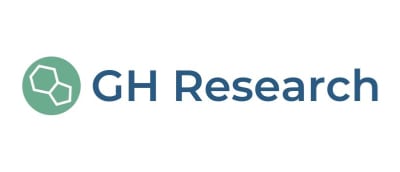
The psychedelics space continues to see heavy investor interest, and RA Capital backed GH Research in April with a nine-figure round. GH is taking its programs public, with a lead inhalant centered around the substance colloquially known as “toad venom.” Though the drug’s scientific name is a mouthful — 5-Methoxy-N, N-dimethyltryptamine is the official name — it picked up the toad venom nickname due to its presence in a certain toad species native to the southwestern US and northwestern Mexico. The psychedelic saw a rapid rise in recreational use in the mid-2010s, per a VICE News report, as individuals attempted to achieve the ‘ego death’ phenomenon. GH is starting with treatment-resistant depression and has two other undisclosed indications on tap. The DMT inhalant, dubbed GH001, is currently being studied in the Phase II portion of a Phase I/II clinical trial. The Dublin-based biotech is also working on an injectable formulation of the drug. GH’s IPO raise is expected to help develop both of these candidates, with a Phase IIb study planned for GH001 and a Phase IIa trial to likely be set up for the other candidate.

Elevation Oncology has spent its time trying to revamp Merrimack’s high-profile seribantumab program into something that can treat solid tumors with the rare NRG1 genomic fusion. After flopping in NSCLC, seribantumab was acquired by Elevation back in 2019 for up to $58 million. The drug candidate is a monoclonal antibody that binds to HER3 and was one in a long string of clinical busts for Merrimack, ultimately resulting in the biotech selling several assets and laying off all its staff and executives. Elevation launched in July 2020 and quickly added a $65 million Series B round to complete enrollment in a Phase II study. Their S-1 was scant on details over how far Elevation wants to take the program with its raise.
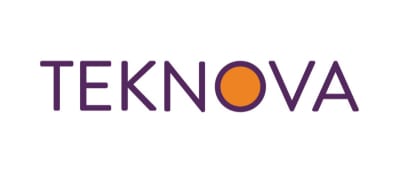
Alpha Teknova has been around since 2000, but now it’s going public on the backs of its reagents. The Hollister, CA-based company says it has about 3,000 customers spanning the entire life sciences market, including biotechs, larger pharma companies and CROs. Alpha Teknova offers three products: pre-poured media plates for cell growth and cloning, liquid cell culture media and supplements for cellular expansion, and molecular biology reagents for sample manipulation, resuspension and purification. Funds from the IPO will largely go toward upping manufacturing and improving efficiency, though Alpha Teknova said it couldn’t quantify exactly how much.
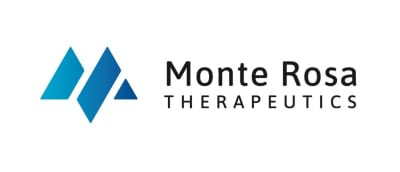
Since last September, Monte Rosa has pulled in two fundraising rounds of $96 million and $95 million apiece. That momentum is leading them toward the next step of becoming a public company. Their platform revolves around developing “molecular glues” that can reprogram the ubiquitin ligases central to protein degradation, a field that’s been producing tons of buzz among investors over the last couple years. The resulting candidates are different from other small molecule degraders, such as PROTAC, that work more like inhibitors. Monte Rosa doesn’t have any clinical programs just yet, but they’ve been planning IND studies for their lead candidate by the end of this June. The experimental drug will target GSPT1, a regulatory protein implicated in the synthetic lethality of solid tumor cells. Within its S-1, Monte Rosa stayed silent over exactly how far it expects to bring this program, only divulging that some of the cash will be directed toward it. The rest of the money will help fund further development of the platform and other preclinical programs.
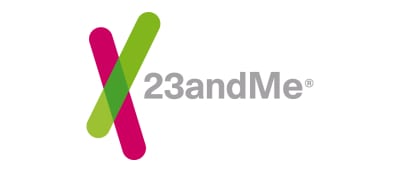
23andMe, one of the buzziest names in healthcare and delivering personalized medicine directly based on a customer’s genetics went public, announced it was going public via Richard Branson’s SPAC in February. Largely known for its saliva-collection products that researchers can analyze to map out an individual’s ancestry and determine genetic risks to certain diseases, 23andMe has made a push in recent years to enter the drug development space. In 2018, they signed a $300 million deal with GSK to allow the big pharma exclusive access to its genetic database, though questions remained at the time over exactly how it would be utilized. That partnership began to bear fruit in 2020, as the pair launched their first clinical trial. In July of that year, patients began enrolling in a study for a CD96-blocking antibody aimed at directing the immune system to attack cancer cells. Efforts from the agreement have since led to the identification of roughly 30 drug targets, the companies said at the time. They’ve also out-licensed the first drug program it developed in-house, signing a deal with Spanish dermatology company Almirall for a bispecific antibody that blocks three cytokines in the IL-36 family. 23andMe’s merger closed on June 17.
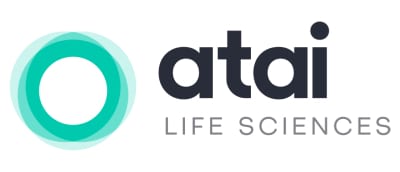
Backed by billionaire Peter Thiel, ATAI has outlined its plans to take its portfolio of experimental psychedelic medicines to Nasdaq. If ATAI’s previous two fundraises are any indication, their final IPO raise could be significant. Last November, ATAI raised $125 million in a Series C that was co-led by Thiel’s firm, scoring the company a $1 billion post-money valuation. Then in March, ATAI “doubled down” on their strategy, as CEO Florian Brand told Endpoints at the time, scoring a $157 million Series D. That marked a four-month span in which the company saw nearly $300 million of capital flow into its coffers, bookending the addition of Recognify Life Sciences and its schizophrenia programs into the ATAI family of companies. ATAI functions as a parent company for several biotechs working on mental health therapeutics, bringing portfolio companies under one umbrella. In April, ATAI brought in its 14th such portfolio firm with Psyber, which looks to improve mental health disorders and induce behavioral changes through “brain computer interface” technology. ATAI has identified programs from six of its companies that will be the primary focus of its IPO funds. The S-1 lists the companies as Perception, Recognify, DemeRx, GABA, Neuronasal and Viridia, with ATAI looking to launch either Phase I or Phase II studies for their drug candidates.

Century Therapeutics is one of several rising allogeneic cell therapy players looking to capitalize on hefty fundraises in their leap to the public domain. The IPO will come just a few months after CEO Lalo Flores steered Century to a $160 million raise, an impressive sum that followed a launch megaround of $250 million back in July 2019. Century is taking a slightly different approach than other biotechs in the arena, banking on induced pluripotent stem cells rather than donor cells. Flores noted that Century is “platform agnostic,” developing both CAR-T and CAR-NKs created with its iPSCs. The lead program is a CD19 CAR-NK that they hope to steer into a human trial by 2022, and Century will push some of its IPO funding toward this goal. If all goes well, Flores envisions a drug to be stored as a frozen product in hospitals. The preclinical pipeline goes after a slate of hematological malignancies as well as solid tumors like glioblastoma, where they would deploy a bispecific CAR. A triumvirate of those preclinical programs targeting CD133 and EGFR, CD19 and CD79b, as well as another multispecific candidate, will also get some IPO cash, with Century looking to complete the full slate of IND-enabling studies by the end of 2024.

This will be Ambrx’s second attempt to go public after an initial effort in 2014 came up short. The earlier attempt left the San Diego company scrambling as the board OK’d a radically different strategy to move forward, approving a plan to sell itself to a syndicate of Chinese investors and pharma companies. Ambrx laid low for the next five or so years, returning to the scene last November with a $200 million crossover raise. That crossover marked the culmination of Ambrx’s pivot to China, after the biotech had spent much of its early years racking up partnerships with American pharmas like Merck, Bristol Myers Squibb and Eli Lilly. Since 2015, Ambrx has signed discovery deals with BeiGene, Suzhou-based MabSpace and Shanghai-based NovoCodex, among others. Ambrx plans to focus its IPO cash largely on their first in-house drug, a HER2-targeting antibody-drug conjugate called ARX788, which they’ve moved into the clinic. Researchers are targeting breast and gastric cancer, as well as other solid tumors. There will also be efforts to fund the company’s prostate cancer and EPB programs.
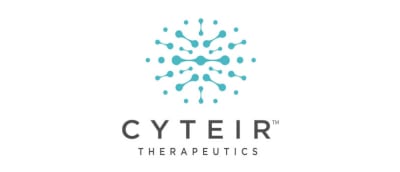
CEO Markus Renschler had previously discussed his company’s plans to go public sometime in 2021, but that it hadn’t yet finalized the exact timing. Now, the Nasdaq jump will come roughly four months after Cyteir pulled in an $80 million Series C round, which the biotech used to hire more employees and further its lead candidate to a Phase II study. The program, an inhibitor of RAD51-mediated DNA repair dubbed CYT-0851, is being evaluated as a monotherapy and targets RAD51 — a critical enzyme in double-stranded DNA repair, as Cyteir researches the concept of synthetic lethality. It’s a phenomenon that could potentially inhibit the DNA damage repair that cancer cells need to survive and grow, Renschler told Endpoints in February. IPO funds are expected to carry this program through the completion of its Phase II trial, as well as fund another program going after the relationship between cytidine deaminases and homologous recombination.

Sekar Kathiresan’s effort to pioneer the next generation of gene editing is going public on the backs of monkey data they believe could change the way a genetic disorder resulting in extreme cholesterol levels is treated. That disease, familial hypercholesterolemia, is one that other companies are going after, including Precision Biosciences. Targeting the PSCK9 gene in the liver, Verve researchers made a single change from A to G in the genetic sequence with the goal of deactivating the gene for good. So far, Verve says the data have proved durable. Back at the JP Morgan conference in January, Kathiresan unveiled six-month follow-up data showing how their approach lowered LDL cholesterol and average blood PCSK9 protein levels and kept them low for six months. Given that liver cells replenish after about 200 days, Kathiresan said at the time the continued low levels suggest that the technology is working. Verve expects to dose its first patient some time in 2022 for the heterozygous form of the disease, and Kathiresan is hoping to expand its pipeline to target at least seven other genes related to the LDL-C, triglycerides or lipoprotein(a) pathways.
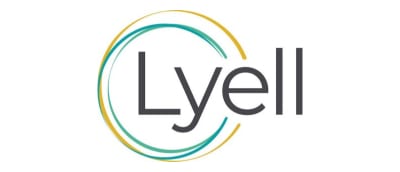
Rick Klausner has assembled an all-star team to shift the cell therapy paradigm at Lyell, and teamed up with GlaxoSmithKline R&D chief Hal Barron as part of a $600 million launch round in 2019. The cast includes co-founder Stan Riddell, EVP of science Nick Restifo, CSO Margo Roberts and scientific founders Crystal Mackall of Stanford and David Baker of the University of Washington. Everything is still preclinical, and the $150 million listed in the S-1 is likely a placeholder for a massive IPO round to come. But they expect to rectify that in their fourth year, with four INDs anticipated in 2022. Presumably human proof-of-concept data to track their quest would follow soon after. Klausner stepped away from founding CEO role to make way for Elizabeth Homans, and could be in for a substantial windfall if it all plays out as planned. The scientist/entrepreneur has more than 16 million shares currently — 7.2% of the total. Klausner’s investment group Milky Way, which has taken a stake in a variety of biotechs, has 8% of the company. And around 12.5 million of his personal shares are exercisable within 90 days of March 31.
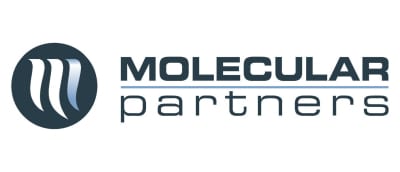
Molecular Partners is ostensibly seeking to capitalize on the March news that one of their antiviral programs will participate in an NIH-run Covid-19 trial. The Swiss biotech teamed up with Novartis for the candidate, which is what they’re calling a “trispecific” DARPin antiviral known as ensovibep. Researchers will evaluate the antiviral as part of the NIH’s ACTIV-3, the hospitalized mild-to-moderate patient arm of their ACTIV protocol against Covid-19. If the medicine hits all its milestones, Novartis will be on the hook for up to $231 million. But Molecular Partners is also focusing on eye diseases, oncology and AML. The company has a Phase III program for wet AMD where they’ve partnered with Allergan/AbbVie and a lead cancer program for FAP-positive cancers in collaboration with Amgen. The biotech has three programs it expects to fund with its IPO: a Phase I trial for its second oncology program seeking to bind FAP and CD40, to complete a Phase I study for the second Novartis-partnered Covid-19 program known as MP0423, and to advance their liquid tumor portfolio in AML through Phase I as well.

The week after Biogen’s controversial approval for its Alzheimer’s drug Aduhelm, Alzamend Neuro priced a $12.5 million IPO to take its own slate of neurodegenerative drugs into the clinic. The lead candidate, AL001, is an ionic cocrystal of lithium created at the University of South Florida. While conventional lithium salts have long been used as a prophylactic for depression — and are currently used as a mood stabilizer for patients with bipolar disorder — they require multiple doses throughout the day to reach therapeutic concentrations in the blood. Current lithium drugs like lithium chloride and lithium carbonate suffer toxicities and poor physiochemical properties. But Alzamend thinks it doesn’t have to be that way. Scientists at USF set out to make a new lithium cocrystal composition that would allow for lower dosing, with improved physiochemical properties. Alzamend plans on submitting an IND for AL001 by the end of June, and tagged $5.3 million in IPO funds for topline readouts on Phase I trials in mild to moderate Alzheimer’s.
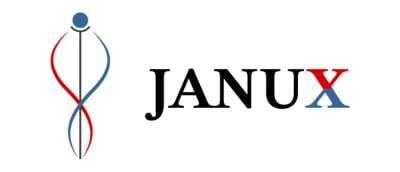
Hot off of a $1 billion deal with Merck signed in December, Janux is taking the fabled Nasdaq leap. December’s deal left Janux eligible for up to $500.5 million in upfront and milestone payments earmarked for each of two targets selected by Merck. But according to its S-1, Merck paid just $8 million upfront in connection to the first target, and will pay another $8 million upon the selection of the second. Janux will receive milestone payments of $142.5 million for each of the targets that successfully reach regulation, and the remaining potential $350 million will depend on sales of the licensed product. Janux completed a $56 million Series A in March, then in late April, the company announced a $125 million crossover round led by RA Capital, a Boston VC behind several pre-IPO financings. It’s a company that’s flourished since the Merck deal, despite not entering the clinic yet. The small San Diego biotech was founded in 2017 on a T cell engager platform called TRACTr, which promises to produce drugs that alter their pharmacokinetics depending on the context.

This merger, announced June 9, involves the first of three SPACs launched by Vinod Khosla, making up roughly $300 million out of a $1.2 billion play. At the time he filed his SEC paperwork, Khosla wrote a brief but polemical letter on the importance of startups and reinvention, giving only vague hints at what he may be targeting with his shell companies. Still, that letter gives reference to CRISPR Cas9, early detection of Alzheimer’s and dementia, Genentech, and how the increasing use of AI could help turn the “practice of medicine” to the “science of medicine” — notable inclusions for a tech firm that has in recent years increasingly waded into biotech. The SPAC priced on March 4.
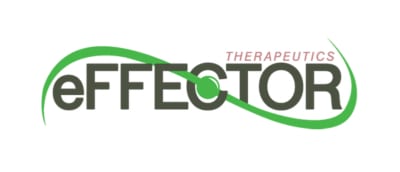
The SPAC from Locust Walk Partners will reverse-merge with eFFECTOR Therapeutics, taking the $175 million from the SPAC raise with a $60 million PIPE financning. Funding from the deal will help the biotech complete its Phase IIb trial for its lead candidate, an oral small-molecule inhibitor of mitogen-activated protein kinases 1 and 2, in combination with Keytruda. There are also plans to launch multiple Phase IIa studies for another program, a small-molecule inhibitor of eIF4A. The SPAC syndicate includes Chris Ehrlich, senior managing director at Locust Walk, and Daniel Geffken, founder and managing director of Danforth Advisors.
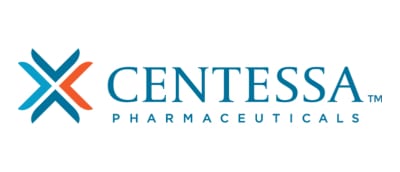
Francesco De Rubertis made no secret of IPO plans for Centessa, his 10-in-1 legacy play, back in February. Barely two months later, the S-1 is in and he’s penciled in the all-too-common $100 million placeholder, despite launching the company with $250 million. The goal is similar to the one he brought over from Medicxi: take their asset-centric mindset and roll up a bunch of biotech upstarts, with unrelated risk profiles, into one pharma company that can carry on the development at scale. They’ll be doing it without Moncef Slaoui, who was featured prominently in the initial press release as chief scientific officer and advisor. Ejected from a prominent GlaxoSmithKline-affiliated board seat and all biotech positions following a “substantiated” case of sexual harassment (for which he apologized), the retired Operaion Warp Speed chief was nowhere to be seen in the S-1. There are 11 subsidiaries that make up Centessa, two of which have subsequently merged. They include Inexia, a 3-year-old biotech whose assets were transferred earlier this year to Orexia. Of the 16 programs now in the Centessa pipeline, the four clinical-stage assets will receive the largest chunk of cash from the IPO raise.

Omid Farokhzad is jumping into the SPAC game, and he’s going in with one of the most experienced teams we’ve seen in biotech. The former Harvard professor had been co-founder for a string of biotechs before deciding to devote himself to a new role as CEO of Seer, where the big idea these past 2 years-plus has been to shift away from genomics in favor of a proteomics platform that is doing some population-wide explorations. That’s enabled him to build a mountain of data that can be probed with machine learning tech in search of insights into diseases, helping develop liquid biopsy products for early-stage diagnoses. Mostafa Ronaghi is taking the CEO role at the Dynamics Special Purpose blank check outfit to Farokhzad’s executive chairman post. Ronaghi, who had been a Stanford scientist, was until recently the CTO at Illumina, co-founded Grail and sits on the Seer board.
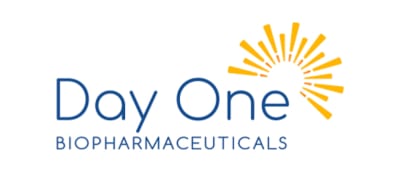
As the pharma industry continues developing and pushing forward cancer treatments, Day One execs argue that the mainstream players left pediatric cancer behind. Adult patients make up a significantly bigger portion of the market, the company said, and there have been lags in understanding pediatric biology properly. Day One’s mission, then, is to try to fill that gap by developing targeted therapies aimed specifically at children. Their proposed treatments are entirely new efforts rather than reformulating adult treatments that come with heavy side effects, like radiation therapy and chemo. Their lead program is a former Takeda program called DAY101, an oral pan-RAF inhibitor that can cross the blood-brain barrier and block mutations in gliomas. As such, Day One is aiming for an indication to treat pediatric low-grade gliomas, the most common form of brain tumors in children. The current standard of care is platinum-based chemo, with no clear favorite beyond that, Bender told Endpoints News in February.

Vera’s IPO came up well short of its initial S-1 estimate, netting only $47.58 million after originally listing $86 million. It also came in below its expected range, pricing initially at $11 per share. Formerly known as Trucode Gene Repair, Vera re-launched itself in January with an $80 million Series C with plans to focus their efforts on atacicept, a 20-year-old molecule now in development for kidney disease. It marked a quick pivot for the company, which had only originally debuted back in September 2019. In an interview following the Series C, CEO Marshall Fordyce wouldn’t provide details on why the biotech chose to move on so quickly from its central technology, but Vera now has a much clearer line of sight on commercialization. Atacicept dates back to the now-defunct Seattle biotech ZymoGenetics, which in 2001 signed a development deal for autoimmune diseases with the then-independent company Serono. In 2009, shortly before they were bought out by Bristol Myers Squibb, ZymoGenetics licensed the molecule to Merck KGaA, who kept it going in a variety of mid and late-stage trials. Most of those came up short, including studies on multiple sclerosis, lupus and rheumatoid arthritis. But earlier this year, Merck announced new Phase IIa data for patients with IgA nephropathy. Last November, Vera licensed the drug for a 10% equity stake in the biotech and €605 million in milestones.

This SPAC comes from the family fund of tech billionaire Michael Dell, a synthetic biology legend out of MIT and Harvard and the former director of the NCI. His investment team includes James Huang, the Taiwanese born managing partner of Kleiner Perkins Caufield & Byers China who launched Panacea a few years ago, as well as John Phelan, the co-founding partner at Dell’s MSD Partners and MSD Capital. James Collins, the MIT professor and co-founding faculty member at the Wyss Institute, is also joining the board, as is Samuel Broder, who was appointed as the NCI chief by former President Ronald Reagan.
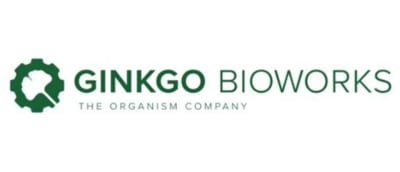
In the largest biotech SPAC deal to clear the hurdles to Nasdaq, the biotech that envisioned everything from remaking synthetic meat to a whole new approach to developing drugs has joined forces with one of the biggest disruptors in the industry. Ginkgo struck a deal to go public in a leviathan SPAC that sets its pre-money valuation at $15 billion. Sloan’s Eagle Equity Partners co-sponsored the transaction with Bellco Capital, led by Arie Belldegrun, a high-flying biotech investor in the 4 years since he sold Kite to Gilead for $12 billion. Belldegrun has become an enthusiastic champion of the Ginkgo founders, who launched the company 13 years ago. Ginkgo will use their new windfall for more than just the field, though. In addition to comparing the biotech to Microsoft, CEO Jason Kelly often likens Ginkgo to Amazon Web Services, providing genetic engineering and other lab services to both startups and larger companies. As such, they rely on economies of scale; the cost of engineering a given cell falls as they engineer more cells. So far they’ve been tripling capacity and halving costs each year. They now plan to add more facilities, while offering adjacent services, such as data or manufacturing, to help companies that use their platform.
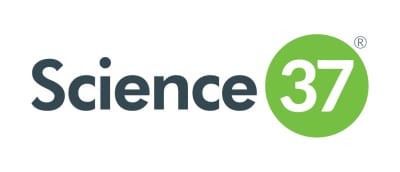
As the Covid-19 pandemic made conventional trials impossible for some drugmakers, more and more companies moved to decentralize their clinical studies, accelerating business for tech developers like Science 37. Leveraging that boost, the company went public on the backs of a SPAC merger and earned a unicorn valuation. The company got its start back in 2014 and struck a partnership with Novartis four years later to launch 10 virtual clinical trials in which patients could participate via cell phone. The system can capture and generate data from things like electronic clinical outcomes assessments, eConsent and real-world evidence. It employs the help of not only devices, but also telemedicine investigators, mobile nurses and remote coordinators. According to a report Science 37 conducted itself, CEO David Coman said more than 80% of biopharma companies plan on conducting a clinical trial using at least some decentralized elements this year, and nearly 60% don’t have the internal capabilities to do it.
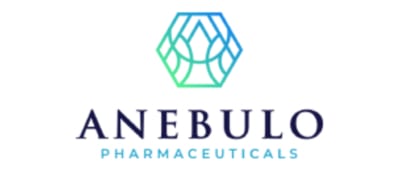
Anebulo Pharmaceuticals penciled in a modest $15 million for its IPO raise. The Lakeway, TX-based company, founded just last year, is focused on developing treatment for cannabinoid overdose and substance addiction. Anebulo’s lead candidate, ANEB-001, is designed to reverse the negative effects of cannabinoid overdose within one hour of administration. Anebulo is hoping to fully finance a Phase II proof-of-concept study for the program with its IPO money. But this won’t be the last time Anebulo is looking to raise money — in their S-1, they noted that they’ll have more capital in about 18 months to run the pivotal safety trials, launch the drug commercially and make milestone payments to Vernalis, from whom Anebulo licensed its program. Anebulo set its IPO terms on April 26.
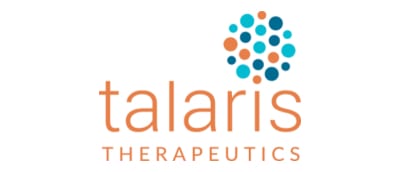
Talaris recently saw a nine-figure raise, coming in the form of a $115 million Series B back in October. The mission here is to make organ transplants safer — and potentially eliminate the need for immunosuppressive drugs — by way of allogeneic stem cell therapy. At the time of the Series B, CEO Scott Requadt said he saw “dramatic progress” over the previous 18 months, noting Talaris had its first Phase III trial for the lead FCR001 program in living donor kidney transplant recipients. FCR001 itself is composed of stem and immune cells that are procured from a healthy donor, who is also the organ transplant donor. Talaris does all its manufacturing itself and is then administered to the patient after “nonmyeloablative conditioning,” according to the biotech’s S-1. Some of the IPO cash will be funneled toward the registrational Phase III for FCR001, while additional funds will help further R&D and other trials for the program. There will also be some money earmarked for the expansion of CMC operations to support eventual commercialization of the approved product, should it get there.
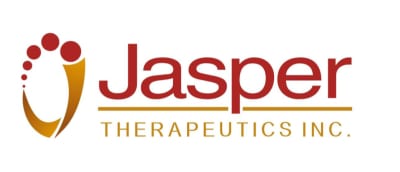
Originally launched out of Stanford in late 2019, Jasper’s main focus has been around their anti-CD117 antibody, which it’s developing as a conditioning agent for all sorts of stem cell transplants in order to make the procedures safer and more accessible. The company had received $35 million as part of that Series A thanks to the discovery of a Stanford grad student showing an easier way to deplete stem cells in mice before transplantation. Stanford scientist Judith Shizuru then helped turn that discovery into the antibody around which Jasper has spent so much effort. It also led Jasper to see whether or not other companies had started looking at this type of procedure in humans, leading them to a collaboration with Amgen. Rather than using chemotherapy or radiation to remove old stem cells, the program works by reducing stem cells from within their hard-to-reach pockets in the bone marrow. Earlier this year, Jasper’s lead program JSP191 reported its preliminary data from an open-label Phase I study, with all six individuals showing successful engraftment of the stem cells in their procedures.
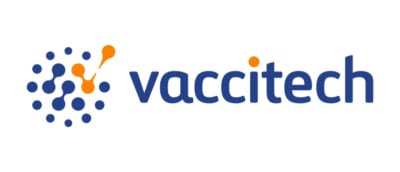
The British biotech is most famous for creating the technology behind the AstraZeneca/Oxford University Covid-19 vaccine, with its co-founder Sarah Gilbert having headed up that research. Vaccitech’s push to go public came just a couple of weeks after raising an impressive $168 million for a Series B round, led by London investment firm M&G and joined by Gilead and Tencent, among others. Concerns have arisen over the AstraZeneca shot due to a rare side effect of blood clots in younger recipients, however, which may limit some of the optimism surrounding the biotech. The EMA and MHRA have both requested that clots be listed as a very rare potential risk to the vaccine, though they noted the benefits of getting the shot continue to outweigh those risks. Vaccitech noted these concerns in its S-1 “risk factor” section, writing that in addition to the positive risk-benefit profile of the vaccine, “there can be no assurance that the vaccine is not associated with an increase in the overall risk of thromboembolic events.” AstraZeneca also paused its vaccine trial in children as the clotting worries continued. Vaccitech set its terms on April 26.
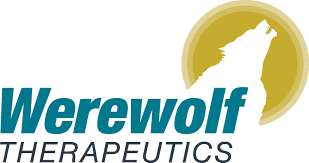
Boston-based Werewolf outlined some of its plans to hit the clinic back in January, when CEO Dan Hicklin took the wraps off a $72 million Series B. Using an engineering platform dubbed PREDATOR, the company has three molecules belonging to a class they dub Indukines, which comprises four components: a cytokine, an inactivation domain, a half-life extension domain and a linker that can be cleaved by proteases found in tumors. That way, they reason, the drug stays quiet throughout the body and only triggers an inflammatory effect against cancer. The system makes use of technologies from Harpoon — a fellow MPM company — including “polypeptides and a binding moiety for conditional activation of certain polypeptides.” In addition to promising royalties and exchanging certain other patent rights, Werewolf paid a grand $500,000 upfront to Harpoon, which is building an operation around T cell engagement. With an initial focus on IL-2 and IL-12, Werewolf is looking to begin human testing for WTX-124 and WTX-330 in 2022. The third candidate aims to conditionally activate IFN-a.

The small neuro disorder biotech Protagenic Therapeutics filed for an $18 million IPO last Thursday. Working on neuropeptides derived from the TCAP family, the company’s lead program PT00114 is being developed to treat stress-related disorders such as PTSD and drug and alcohol addictions without interfering with brain function. The compound is expected to complete IND-enabling studies in early 2021, and subsequently, enter Phase I/II trials. Protagenic said in its S-1 it plans to funnel money toward enrolling this “basket” trial, with the goal of signing up 42 patients. Ultimately, Protagenic’s goal is to improve mental health by counterbalancing stress overdrive and restoring the health of neuronal cells. Protagenic is already listed on the OTCQB market, with securities listed at $4.15 as of Feb. 12.

Rain Therapeutics saw a shower of good fortune in 2020. Around Labor Day last year, the biotech tripled its pipeline in the span of a week, licensing a research program from Drexel University and nabbing a Phase II-ready drug from Daiichi Sankyo. Rain followed that up with a $63 million fundraise shortly after to push forward all three of its programs. The Daiichi program has now become Rain’s lead. Dubbed RAIN-32, the candidate will see the bulk of Rain’s IPO funds funneled toward it. Per the S-1, Rain plans to launch three studies for RAIN-32, including a pivotal Phase III study in an MDM2-amplified subtype of liposarcoma. The newer candidates pair up with the company’s original mission, one which helped it launch with an $18 million Series A back in 2018. Rain’s first experimental drug was tarloxotinib, a small molecule inhibitor designed to target low oxygen levels in tumors, thereby sparing healthy tissues.
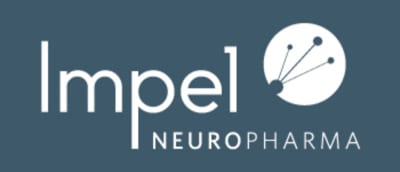
More than two years after its crossover raise, Impel NeuroPharma is finally heading to Nasdaq. The Seattle-based biotech has a unique approach for getting CNS drugs delivered to the brain — through the nose. Impel’s tech is centered around a delivery system of nasal doses of old and thoroughly understood drugs, with research going toward migraines, Parkinson’s and agitation related to autism. Led by CEO Adrian Adams, Impel hopes an enhanced nasal delivery approach can improve a drug’s performance, offering an opening for an improved therapeutic effect with a liquid or dry formulation of an old drug. Their migraine program has completed its pivotal study, with an expected PDUFA date of Sept. 6 later this year. As such, the majority of the planned IPO cash will go toward funding the potential commercial launch of the migraine treatment, which Impel plans to market as Trudhesa. The drug is an upper nasal formulation of dihydroergotamine to treat acute migraines. The remainder of the IPO funds will help the INP105 program, designed for acute treatment of agitation and aggression associated with autism spectrum disorder. This candidate is a nasal reformulation of olanzapine.

Zymergen’s IPO pitch comes five years after the synthetic biology company raised $174 million from investors by piquing interest in designer microbes. The company so far has specialized in engineering microbes for new materials, including electronics and insect repellent, or for manufacturing chemicals and fuels. But they’ve also quietly been involved in drug development and manufacturing biologics. Their IPO haul, which could be significant, represents a major milestone for a synthetic biology field that has been trying to remake corners of the biopharma industry. The amount they ultimately raise could provide a benchmark for the next widely anticipated synthetic biology IPO: Ginkgo Bioworks, which has played a much more direct role in drug development, teaming with Roche, Moderna and Synlogic. Zymergen has yet to make any major public inroads into biopharma, but they say on their website in a section labeled “emerging areas” that they are actively using their genetic libraries, high-throughput systems and other technologies to develop drugs for oncology and infectious diseases. Their first product, a film that allows customers to make foldable touchscreens, was launched in December 2020.
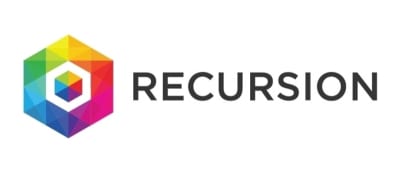
Recursion’s $239 million Series D marked one of the largest, if not the single largest, funding rounds for an artificial-intelligence-focused biotech. That approach centers around a 100,000 square-foot warehouse in downtown Salt Lake City, where robots take Petri dishes of different cell types and knock out different genes. They’re constantly taking pictures in the process, with the differences being too small for a human eye to differentiate. But their computers can, and by doing so pick up patterns to indicate what can make a cell sick and which genes, when targeted, can make them healthy. Within its S-1, Recursion signaled a broad development push across its pipeline. The biotech plans to focus the funds on Phase II trials for four of its programs: REC-4881 for familial adenomatous polyposis, REC-3599 for GM2 gangliosidosis, REC-2282 for neurofibromatosis type 2 and REC-994 for cerebral cavernous malformation. There are also plans to use some of the money on six of the biotech’s preclinical candidates, including Batten disease, solid and hematological malignancies and the lead molecule for the treatment of C. difficile colitis.
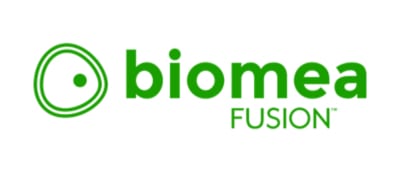
Biomea is working on small molecules for genetically defined cancers, but with a twist — they want their drugs to be irreversible. As the company lays out in its S-1, an irreversible small molecule is a synthetic compound that forms a permanent bond to its target protein. The idea here is to induce greater target selectivity, lower drug exposure and provide a much more durable response than typical small molecules. Biomea is focusing solely on its lead program, known as BMF-219. The candidate comes from the biotech’s irreversible small molecule platform and is aimed at inhibiting menin in menin-dependent cancers. BMF-219 hasn’t hit the clinic yet, but Biomea is hoping to file an IND at some point in the second half of 2021. The S-1 expands on how Biomea plans to get there. About $80 million to $90 million of the raise will go toward the BMF-219 program, including the IND-enabling studies as well as a planned Phase I/II trial. Another $40 million to $45 million is slated for R&D for two additional undisclosed programs.
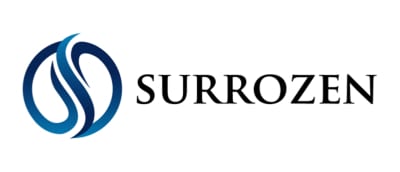
Surrozon said on April 15 that it plans to reverse-merge with Consonance Capital Management’s SPAC in a $212 million deal, which includes $92 million from the shell company and $120 million in PIPE financing. The company is working on a pipeline of experimental drugs that modulate the Wnt pathway, which plays a role in the maintenance and self-renewal of stem cells in a variety of tissues. Products that affect Wnt signaling, whose name combines Wingless and Int-1, can be difficult to manufacture because the process is highly unstable. The goal, then, is to develop drugs that are flexible enough to address insufficient endogenous Wnt or insufficient receptors that have the potential to repair damaged tissue. So far, that’s taken the form of two lead programs, one for inflammatory bowel disease and another to treat severe alcoholic hepatitis. Surrozen is hoping to utilize the two Wnt modulating platforms that helped create these compounds to expand into other diseases, such as those in the eye, lung, kidney, cochlea, skin, pancreas and central nervous system.

Tango Therapeutics and its CRISPR-focused search for new cancer genes is reverse merging with Boxer Capital’s blank-check company, the company announced April 14. CEO Barbara Weber told Endpoints News that Tango had been planning for a traditional IPO at some point this year, but they shifted gears when Boxer, who had previously led the company’s Series B in April 2020, approached Tango execs with the SPAC idea. The biotech takes advantage of CRISPR as a research tool, using it to discover gene pair targets that create unique vulnerabilities in cancer cells. It’s similar to the underlying theory behind PARP inhibitors — drugs that go after a protein in patients with a mutation on one of the proteins used to repair DNA. Tango has three programs it intends to advance with Wednesday’s funds, looking to file INDs in each of the next three years..
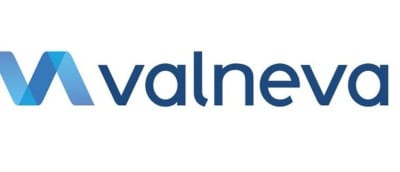
Despite its UK deal to supply Covid-19 vaccines, Valneva is wary of export tensions between Britain and the EU slowing down delivery times. The biotech highlighted the potential risk that’s been in the news recently, noting in its S-1 that export restrictions may affect its ability to deliver those shots promised to the UK. Valneva has commitments to deliver 100 million vaccines to Britain by 2022, with the UK owning additional options for another 90 million in supply between 2023 and 2025. They haven’t opted-in just yet, but thanks to Brexit, Valneva said any limits on imports or exports may pose a “substantial” risk as the shots are manufactured in the UK but packaged in the EU. The company itself is headquartered across the English channel in Saint-Herblain, France. The April 9 filing comes just a few days after the biotech reported new positive vaccine data from a Phase I/II trial, and a Phase III could begin as soon as the end of the month. Valneva tested three dosing levels, and like many other Covid-19 shots being tested or authorized, it was administered in two jabs three weeks apart. It’s also working on a Lyme disease vaccine with Pfizer, having launched a Phase II study for that candidate in March. Valneva set its terms on April 29.

Backed by Novo Ventures and Abingworth, Reneo had enough cash beforehand to take them through the completion of three early- to mid-stage trials for their lead program, REN001, CEO Gregory Flesher told Endpoints at the time. Within its S-1, Reneo has now detailed its plans to use the IPO funds to complete those studies in primary mitochondrial myopathies, fatty acid oxidation disorders and McArdle disease. REN001 is a PPAR-delta agonist, and the three conditions Reneo is looking at are related to different parts of mitochondrial function. A once-daily pill, REN001 has the ability to help cells express certain genes within the mitochondria that increase a patient’s metabolism. Though it’s not a gene therapy, the ultimate goal is to help patients replenish mitochondria cells once old ones die off while simultaneously boosting enzyme production.
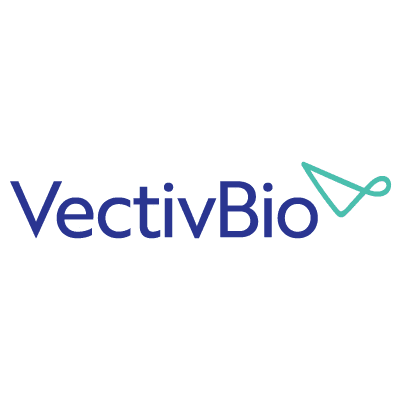
Luca Santarelli tells a straightforward story about VectivBio. After selling Therachon to Pfizer in an $810 million deal, the Roche vet immediately spun out with the new company, taking their Phase II drug apraglutide for short bowel syndrome. The IPO was a natural next step on the heels of a mega-raise of $110 million announced last October, with the focus still squarely on executing the Phase III and laying the foundation for commercialization work. A long-acting synthetic peptide analog of GLP-2, apraglutide remains the sole asset in the company and will be deployed in a range of rare gastrointestinal disorders outside of SBS. Topline results for the lead indication, in SBS intestinal failure, are expected in 2023. While VectivBio is looking to in-license or acquire additional drugs for the pipeline, the IPO proceeds are mostly going toward the core program — including a Phase II targeting a subgroup of SBS-IF patients with colon-in-continuity anatomy and proof of concept in apraglutide’s utility for gastrointestinal manifestations of graft-versus-host disease.
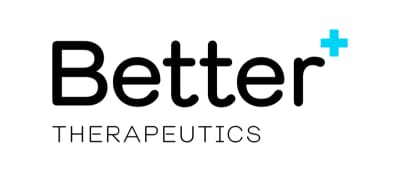
Better Therapeutics announced its intention to go public via SPAC on April 7. The company focuses on delivering cognitive behavioral therapy to address the root causes of cardiometabolic diseases, and is planning to merge with the SPAC put together by Farallon Capital Management, RS Investments, Sectoral Asset Management, Monashee Investment Management and other undisclosed investors. The SPAC itself held roughly $56 million, while Better also got $50 million in PIPE financing. Proceeds of the merger will be used to advance their lead product for the treatment of type 2 diabetes, BT-001, to marketing authorization by the FDA and advance their pipeline of prescription digital therapeutics for a range of cardiometabolic diseases, Better said.

Oleg Nodelman’s second holding company debuted with a $150 million raise on April 7. Panacea II is the second blank check company to go public since his Ecor1 firm launched its first in June 2020. The shell found a partner quite quickly, agreeing to take David Hung’s Nuvation Bio public in October of that year, with the pair completing their merger in February 2021.
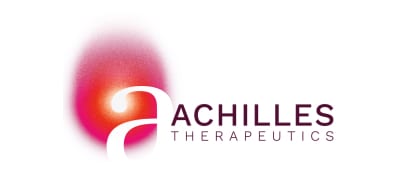
Achilles pulled in a $175.5 million raise to take its T cell therapies targeting clonal neoantigens to Nasdaq. Co-founded by Charlie Swanton of the Francis Crick Institute, the UK biotech aims to leverage heavy sequencing to identify a patient-specific set of tumor mutations that it can target. Unlike other neoantigen pioneers like Gritstone Oncology, Neon Therapeutics and BioNTech, Achilles is looking to directly deliver cancer killing T cells rather than stimulating an immune response via a vaccine. Achilles got a boost in September 2019 with a $121 million Series B thanks to a syndicate led by RA Capital. And in November 2020, the biotech pulled in another $69.7 million for an oversubscribed Series C.
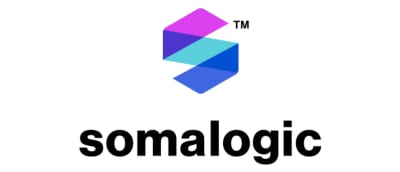
Eli Casdin and Keith Meister’s second SPAC, CM Life Sciences II, announced its intent to merge with SomaLogic in late March. The Boulder, CO-based company is one of a number of biotechs looking to understand the human body by looking at proteins, rather than DNA and RNA, and the deal comes just three months after the company’s Series A extension. With the merger, SomaLogic can now “double down” on its strategy of both collecting proteomic data and creating applications for clinical trials using that data, CEO Roy Smythe told Endpoints at the time. The company says it has a total of 20 validated testing tools, known as SomaSignal, with another 100 or so in development.
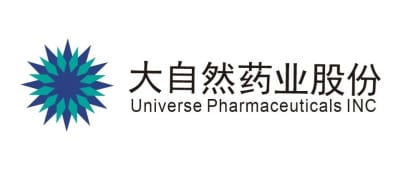
The Ji’an, Jiangxi, China-based company markets its programs toward the elderly in China with its traditional Chinese medicine derivatives, with the goal of addressing physical conditions related to aging as well as their general well-being. Founded in 2019, Universe boasts 26 registrations and approvals with Chinese regulators and sells 13 products as of early March. Within its F-1, Universe says it’s splitting the IPO raise into four roughly equal parts. There is 28% listed for upgrading and expanding manufacturing facilities, 27% for R&D, 24% for marketing and 21% for corporate upkeep.
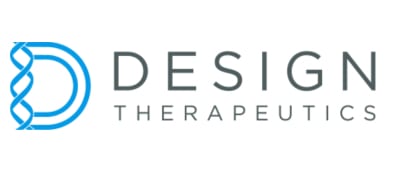
Design secured its launch round just over a year ago, and is now taking its GeneTAC platform public. The San Diego-based biotech focuses on degenerative diseases linked to nucleotide repeat expansions, and is co-founded and chaired by Pratik Shah, who previously helped engineer two multi-billion M&A deals. Shah was CEO of Auspex for 2 years before Teva scooped it up for $3.5 billion in 2015, and he was also chairman at Synthorx, which Sanofi bought out for $2.5 billion at the end of 2019. GeneTAC, short for gene targeted chimeras, helps Design go after what it says are more than 40 degenerative diseases caused by nucleotide repeat expansions. The biotech has two pipeline programs thus far, one in Friedreich’s ataxia and one in myotonic dystrophy type-1. IPO funds are slated to go toward both of these programs, Design wrote in its S-1. It estimates $30 million is needed to take the Friedreich’s ataxia candidate through a Phase I trial and $35 million to take the DM1 program through Phase I. Another $35 million will fund a currently undisclosed program, with the remainder of the cash going toward general R&D and corporate purposes.
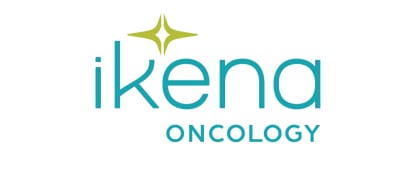
Based out of Boston, Ikena got started with a $49 million Series A back in 2017, pulling in funds from high-profile backers like OrbiMed and Atlas Ventures to advance its immunometabolism therapies to treat cancer. The idea is to leverage metabolic pathways and the broken-down molecules that result from the body’s metabolism into suppressing the body’s immune system. Ikena’s lead in-house program is IK-930, an oral small molecule inhibitor of a transcription factor known as TEAD, or the transcriptional enhanced associate domain. It deals with Hippo pathway mutations, with Ikena hoping the candidate can help regulate polarity, proliferation and tissue homeostasis, among other things, in solid tumors. They’re hoping to submit an IND here in the second half of 2021. There’s also two BMS-partnered programs dealing with TDO and IDO, although indirectly. BMS owns a roughly 8% stake in the company after Celgene teamed up with then-Kyn Therapeutics in early 2019.
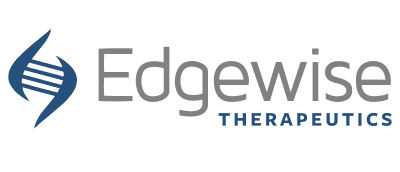
Edgewise is focusing on rare muscle disorders, with ambitions in Duchenne muscular dystrophy, Becker muscular dystrophy, and limb-girdle muscular dystrophy. Its lead program is already in the clinic. Edgewise says that EDG-5506 is a small molecule inhibitor for fast myofiber (type II) myosin designed to address the root cause of dystrophinopathies. It’s currently in a Phase I trial for DMD, Becker and LGMD and Edgewise hopes it can limit the hypercontraction stress caused by the lack of dystrophin in these diseases. About $80 million of the IPO funds will be funneled toward this program to get it through the Phase I study and through the interim readout of a Phase II/III study. An additional $55 million is earmarked for the research and development of three preclinical programs, EDG-6289, EDG-002 and EDG-003. EDG-6289 is listed as a muscle stabilizer, while the other two are billed as muscle desensitizers.
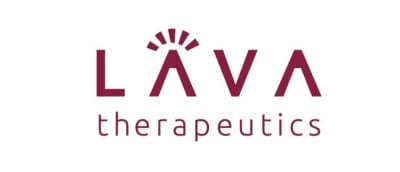
Lava debuted back in May 2018 with a modest $18.9 million to research what was then a nascent field: gamma delta T cells. They stayed almost entirely under the radar — not issuing another press release for over a year and a half — until announcing a cancer bispecifics partnership with J&J’s Janssen in May 2020. A few months later, they returned to the venture well with $83 million in Series C financing and two programs ready for the clinic. With a focus on immuno-oncology, the Dutch-American biotech’s scientific approach involves building bispecific antibodies that grab a receptor on gamma delta T cells and link it with a particular protein on the tumor, aiming to only activate while in the vicinity of the cancer. Lava also says its therapies can help induce immune memory of the cancer, should it appear again, due to gamma delta T cells’ similarity to antigen-presenting cells. The biotech built its research on the scientific discoveries of CSO Hans van der Vliet, an oncologist at VU University Medical Center and Cancer Center Amsterdam.

The second SPAC from Glenview Capital has closed a $600 million raise for its shell company, pricing on March 24. Its syndicate includes the firm’s founder Larry Robbins and partner John Rodin, who is the SPAC’s CEO.

This is the second of three SPACs launched by Vinod Khosla, making up $400 million out of a $1.2 billion play. At the time he filed his SEC paperwork, Khosla wrote a brief but polemical letter on the importance of startups and reinvention, giving only vague hints at what he may be targeting with his shell companies. Still, that letter gives reference to CRISPR Cas9, early detection of Alzheimer’s and dementia, Genentech, and how the increasing use of AI could help turn the “practice of medicine” to the “science of medicine” — notable inclusions for a tech firm that has in recent years increasingly waded into biotech. This SPAC priced on March 24.

This is the third of three SPACs launched by Vinod Khosla, making up $500 million out of a $1.2 billion play. At the time he filed his SEC paperwork, Khosla wrote a brief but polemical letter on the importance of startups and reinvention, giving only vague hints at what he may be targeting with his shell companies. Still, that letter gives reference to CRISPR Cas9, early detection of Alzheimer’s and dementia, Genentech, and how the increasing use of AI could help turn the “practice of medicine” to the “science of medicine” — notable inclusions for a tech firm that has in recent years increasingly waded into biotech. This SPAC priced on March 24.

Three days after RA Capital founder Peter Kolchinsky steered his first SPAC into a $300 million raise for Point Biopharma’s late-stage radiopharmaceuticals play, he teed up a new one. This new SPAC raised $130 million and priced March 18. The SPAC deal with Point combined Kolchinsky’s trust of $135 million along with a $165 million offering with a slate of high-profile investors buying into new shares: Johnson & Johnson Innovation – JJDC, Inc., Surveyor Capital (a Citadel company), Farallon Capital Management, LLC, BVF Partners LP, Boxer Capital, Sphera Healthcare, Woodline Partners LP, Suvretta Capital, Fairmount Funds, and Perceptive Advisors.

Revolution Healthcare Acquisition, the blank check company ARCH formed in partnership with the tech player General Catalyst, raised the $500 million it asked for in an IPO. The two firms had made it clear that they will be looking to take a digital health company public — with the end goal being part of a paradigm shift involving “technologies like wearable sensors, remote continuous data capture, point of care diagnostics, telehealth capabilities and artificial intelligence/machine learning tools. Mental health — an area ARCH co-founder and managing director Bob Nelsen has previously said is “at the top of my mind” — will loom large in that search, as will home-based care.
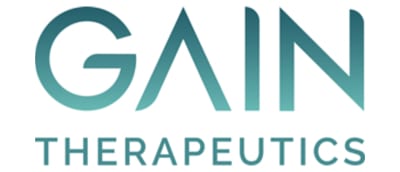
Having sought a relatively modest raise given the run of biotechs over the last year or so to go after hefty IPO cash, Gain raised $40 million for its public offering. The company focuses on protein misfolding, with an initial goal of treating lysosomal storage disorders. They have exclusively in-licensed a proprietary platform to accomplish this, and are targeting the GLB1 gene to create therapies for GM1 gangliosidosis and the GBA1 for Gaucher’s disease and Parkinson’s. It’s here where Gain will funnel its IPO funds, with the hope of pushing these candidates into Phase I/II trials for their respective indications. The company also has candidates that try to hone in on the IDUA gene in mucopolysaccharidosis type 1 and the GALC gene in Krabbe disease. Gain emerged from stealth last July with a $10 million Series B round, using that fundraise to set up two IND-enabling studies. Gain set its terms on March 10.
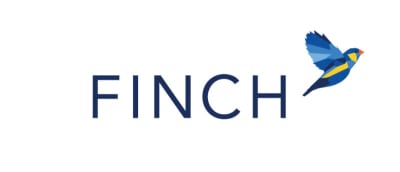
When Mark Smith helped start the nonprofit stool bank OpenBiome in 2012, there weren’t reliable, standardized ways to manufacture and distribute stool preparations for fecal microbiota transplants. More than eight years later, he believes new alternatives are on the horizon. Finch Therapeutics’ S-1 dropped just days after OpenBiome announced it’s phasing out production of new treatments, with an aim to save enough inventory to meet demand throughout 2021 “as a bridge to FDA-approved therapies.” The biotech wants to bring one of those therapies to the market. CP101, a capsule made of freeze-dried stool samples from healthy donors, has hit the mark on recurrence-free bacteria clearance for patients with a C. difficile infection — results that Smith, co-founder and CEO at Finch, said came at a turning point for the field. After some early failures and implosions, scientists may have found the right way to pack all the benefits of a fecal microbiota transplant (FMT) into a pill and skip the cumbersome procedure. Smith raised $128 million in the IPO to accomplish this, and a second, confirmatory trial is expected to begin not long after Finch lands on Nasdaq and should read out in 2023. Finch set its terms on March 15.

Founded by two old pals whose friendship traces back to a university in Guangzhou, China, Connect Biopharma had snagged $115 million from a slate of marquee investors back in August. Now, they’re ready to take the company to Nasdaq with a pipeline of immune modulators, led by an anti-IL-4Ra antibody that can treat inflammatory allergic diseases such as atopic dermatitis, asthma, and chronic rhinosinusitis with nasal polyps. These are big indications chased by some of the top names in the global biopharma world — the lead drug hits the same target as Regeneron and Sanofi’s Dupixent — but Connect believes the assays they used in drug discovery could make them a best-in-class contender. The big reveal will come in the second half of 2021, when topline Phase IIb results are due. For now, the Phase Ib results will have to do, results that showed a four-week treatment improved skin lesion and pruritus in moderate-to-severe atopic dermatitis patients. Connect set its terms on March 12.
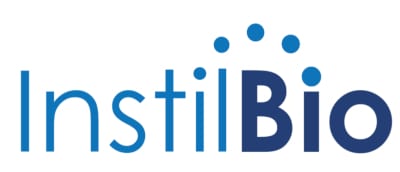
By diving into tumor-infiltrating lymphocytes, Instil Bio faces some high-profile competition not just with TIL players like Iovance, Adaptimmune and PACT Pharma but also CAR-T and TCR-T cell therapy developers like Gilead’s Kite and Bristol Myers Squibb’s Juno. Yet the Dallas-based biotech is all-in on the tech platform, including the manufacturing know-how, it first in-licensed then acquired from Immetacyte, a University of Manchester spinout that’s been running a compassionate use program at a UK hospital for eight years. Since its founding in 2018, it’s raised $380 million of venture funding to get here, and CEO Bronson Crouch’s crew initially penciled in another $100 million raise, but that figure was upsized to $250 million when Instil set its IPO terms on March 15. Instil ultimately priced at $20 per share with a $320 million raise. The plan now is to submit an IND to the FDA — its first — and jump straight into a Phase II trial for melanoma later this year, which Instil hopes can support a BLA submission as early as 2023. Given how frequently CMC issues trip up cell and gene therapies these days, though, there’s likely a long way to go for its in-house manufacturing crew.

The SPAC from Timothy Babich has closed a $250 million raise for its shell company, pricing on March 17. Babich previously founded Nexxus Holdings, FCM Bank, and Fortelus Capital Management.

Eduardo Bravo, the Big Pharma alum and former CEO of the cell therapy company TiGenix, launched this SPAC and garnered a raise of $120 million. The SPAC represents his first major move since Takeda bought out TiGenix and their off-the-shelf stem cell technology for $600 million in 2018. Joining him are two managing partners from Life Science Partners: Martijn Kleijwegt, who helped build the now BioMarin-owned biotech Prosensa and a biotech that later became J&J Vaccines, and Mark Wegter, who is on the board of Kiadis. Bravo and LSP’s pitch to investors is that European biotechs have been severely undervalued, despite the fact that the pace of scientific research and development on the continent is on par with the pace in the US. The SPAC priced on March 16.

The SPAC from Falcon Edge Capital, Presight Capital and Apeiron Investment Group has closed a $230 million raise for its shell company, pricing on March 11. Its syndicate includes Falcon Edge’s chairman Rick Gerson, and SPAC CEO Christian Angermayer, who is Presight and Apeiron’s founder.
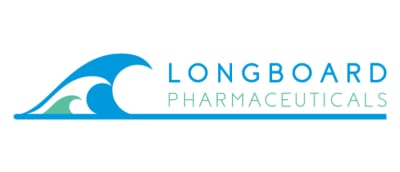
Longboard is making the quick transition to a public company just a few months after spinning out as its own company. A former neuro subsidiary of Arena Pharma, Longboard came to life in October with $56 million in funding. The biotech was originally the brainchild of Arena CEO Amit Munshi, who arrived at JP Morgan in 2020 with ambitious plans, including launching this subsidiary. The company has three key programs in its pipeline, starting with LP352, a “next-generation,” clinical stage 5-HT2C agonist. It’s in development for developmental and epileptic encephalopathies, and the S-1 says Longboard wants to use the IPO funds to complete a planned Phase Ib/IIa trial in this space. Following up is LP143, an agonist of the cannabinoid type 2 receptor, and LP659, an S1P receptor modulator. Those two drugs are targeted at microglial neuroinflammatory diseases. Longboard is seeking to complete Phase I trials for both programs with the IPO money, per the S-1. Former CFO Kevin Lind was appointed as the new CEO back in October. Longboard set terms for its IPO on March 8.
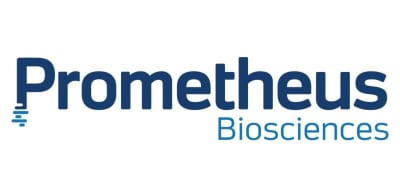
Just a few months after a $130 million crossover round, Prometheus is making the jump to the public market. Spun out of Cedars-Sinai Medical Center, the company built a considerable portion of its scientific foundation around the work of Stephan Targan, an IBD specialist who founded the IBD Center at the medical center about 30 years ago. Their lead program, PRA023, is an anti-TL1A antibody. Pfizer has a similar program, but McKenna has ambitions to build a broad pipeline around IBD. The crossover stretched Prometheus’ runway out to 2023, when McKenna hopes to have three to four programs either IND-ready or in the clinic. In the initial S-1, Prometheus is looking to fund development for PRA023 in ulcerative colitis and Crohn’s disease, as well as their PR600 program — an anti-TNF antibody slated right now as an IBD catch-all. McKenna hopes to complete a Phase II trial for the lead candidate and wrap up IND-enabling studies for PR600. Also included in the S-1 was a $1 million bonus for McKenna should he complete the IPO raise by March 9. That comes on top of an industry-standard $500,000 salary last year with $750,000 collected in performance bonuses. Prometheus set its IPO terms on March 8.

The SPAC from Kevin Nazemi has closed a $300 million raise for its shell company, pricing on March 10. Nazemi currently serves as Partner at startup investment and incubation firm Lobby 7 Capital.

The SPAC from former WellCare execs has closed a $414 million raise for its shell company, pricing on March 2. Its syndicate includes Beau Garverick, a former senior VP at WellCare Health Plans, and Kenneth Burdick, the firm’s former CEO.

Perceptive’s Joseph Edelman is no stranger to the holding companies that have now come to dominate the market,, as Arya IV priced just a few weeks after Arya III announced its plans to reverse-merge with Nautilus. The VC firm filed Arya IV’s S-1 just one day after that announcement, indicating Edelman is steering a well-oiled SPAC machine with no plans of slowing down. Much of that foundation has ostensibly been built only over the last 12 months. The first Arya acquisition outfit went public in 2018, but didn’t find a partner until March 2020 when it combined with TCR player Immatics. Like its three predecessors, Arya IV is aiming to go after biotechs that want to take a quicker route to Nasdaq than through the traditional IPO route. It raised $130 million and priced on Feb. 26.

The SPAC from PIPV Capital has closed a $138 million raise for its shell company, pricing on Feb. 26. Its syndicate includes the firm’s co-founder Osagie Imasogie, previously the founding VP of GlaxoSmithKline Ventures.

The SPAC from a former Disney resort executive has closed a $207 million raise for its shell company, pricing on Feb. 25. Its syndicate includes Allen Weiss, who has been a partner at Apollo Capital Management since 2011 and previously served as president of world wide operations for Walt Disney Parks and Resorts. The SPAC is run by Robert Whitehead, who previously co-founded and ran Sprout Pharmaceuticals and Slate Pharmaceuticals.

The SPAC from Ally Bridge Group has closed a $150.65 million raise for its shell company, pricing on Feb. 17. Its syndicate includes the firm’s founder and CEO Frank Yu.

Spun out of Johns Hopkins with a $23 million Series A back in 2018, NexImmune pulled in a higher than expected $110 million range. The company centers around the idea of specialized nanoparticles that act as antigen-presenting cells to incite a T cell attack on tumors, and had maintained a relatively low profile after that Series A, but researchers presented initial results from a Phase I/II study in its lead program at ASH last December. That study, for NEXI-001, is evaluating patients with acute myeloid leukemia. Among the first five patients dosed, the candidate was shown to induce a return to baseline levels of absolute lymphocyte counts within 3 to 35 days. The program is still in its early clinical days, however, and aims to enroll between 22 and 28 patients. NexImmune’s other lead candidate NEXI-002 hasn’t yet had a data readout, but was dosed in the first patient with multiple myeloma last October. The company’s ultimate goal for its molecules is to provide a more durable attack, involving more targets and less likelihood of a setback for patients, particularly if they can make an impact on naïve and memory T cells to keep the human immune system on alert. IPO funds will go toward both of these programs.

Decibel roughly doubled their capital in November after raising $82 million in a Series D, and now they’ve gone public just a couple of months later with an upsized $127 million raise. The company spent years focused on preventing hearing loss, but they pivoted last winter. Faced with what they characterized as surprising advancements in genomic and regenerative technology, and having failed to find a biomarker that could let them run a preventative trial, they decided to scrap key programs and focus on gene therapies that can restore hearing loss. Developed in partnership with Regeneron, Decibel’s gene therapy for the same protein isn’t scheduled to hit the clinic until 2022. Researchers are starting with fixing a single gene in people with the OTOF mutations, but the long-term goal is to build cures for more general hearing loss and balance disorders. The biotech is one of three Boston-area companies chasing cures for hearing disorders, next to the well-heeled gene therapy upstart Akouos and the stem cell regeneration developers at Frequency Therapeutics.

Sema4 is one of a clutch of startups that try to combine a wide variety of biological data and, with advanced analytical tools like AI, turn them into insights drug developers can use for discovering new targets or designing new trials. They’ve teamed with Sanofi on a five-year digital study to better understand asthma and, late last year, with J&J to identify patients best suited for cancer trials. Founded by Eric Schadt, a computational biologist from Merck and Pacific Biosciences, Sema4 attracted backing from Blackstone, Section 32 and others, who have poured over $240 million into the company since 2017. They also have a patient-facing side, helping run cancer and reproductive health screens. Throughout the pandemic, they’ve conducted thousands of Covid-19 surveillance tests for the state of Connecticut. With cash from a Series C in July, they’ve been expanding, listing dozens of open jobs in bioinformatics, lab work, disease discovery and even sales. Casdin Capital, having raised one of the largest ever life science SPACs, announced its intent to merge its first shell corporation, CM Life Sciences I, with Sema4 in February. The merger is expected to close in the second quarter.

Biophytis is taking a second crack at an IPO, having previously filed an F-1 back in May 2019. The company withdrew its $15 million pitch later that July due to “unfavorable market conditions,” but is penciling in the same amount for its latest attempt. If successful this time around, Biophytis plans on funneling most of the funds into its lead program: a small molecule dubbed Sarconeos, which the biotech believes can treat sarcopenia, Duchenne muscular dystrophy, and pneumonia related to SARS-CoV-2. The molecule is designed to activate the MAS receptor in muscle cells, a key component of the Renin-angiotensin system that controls things like fluid balance, blood pressure, cardiovascular function and muscular metabolism. Sarconeos’ initial target indication, sarcopenia, is the age-related degeneration of skeletal muscle. It’s currently in a Phase II study for sarcopenia with topline results coming in the second quarter this year, as well as a Phase II/III for Covid-19 patients with pneumonia. The first interim analysis for that indication is slated for 2021’s first quarter.
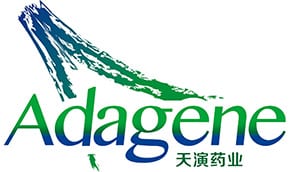
Adagene discovered a new CAR-T candidate earlier in January, and sought to capitalize on the moment with an IPO. They succeeded, pulling in a raise slightly above expectations. Their program for renal cell carcinoma is the first of which the biotech is aware that targets a human endogenous retrovirus expressed in the majority of clear-cell kidney tumors. The CAR-T was developed in tandem with the NHLBI, and the NIH is expected to take over manufacturing and clinical development. Adagene’s IPO funds are slated to go elsewhere, with 95% of the raise penciled in for R&D. The exec team will direct 26% of funds toward its lead candidate, ADG106. A monoclonal antibody and CD137 agonist, the program is currently in Phase Ib/IIa trials for advanced or metastatic solid tumors and/or relapsed/refractory non-Hodgkin’s lymphoma. Another 26% of funds are slated to go toward Adagene’s other two programs, ADG116 and ADG126. Both programs seek to block the known cancer target CTLA-4, with ADG116 focusing on a “unique” epitope. ADG116 has entered a Phase I study while ADG126 is still in preclinical stages. The last 43% allocated to R&D will help fund preclinical candidates and further platform development.

The SPAC targeting the healthcare sector in Asia has closed a $414 million raise for its shell company, pricing on Feb. 5. Its syndicate includes Kenneth Hitchner, who spent nearly three decades at Goldman Sachs and most recently as the CEO of its Asia Pacific group, excluding Japan. Richard Li is the SPAC’s CEO.

Developing small molecule therapies for acute organ injuries, Angion priced at the high end of its range and raised a slightly upsized $80 million. Its lead program, ANG-3777, is currently enrolling Phase III studies for reducing the severity of delayed graft function after a kidney transplant. In an updated S-1, the company says it plans to commit $15 million to $25 million to fund this trial as well as prep an NDA for the compound. If everything goes as planned, data from the trial will read out by the end of 2021 with an NDA coming next year. ANG-3777 is also being studied in acute kidney injury associated with cardiac surgery, with a Phase II study underway. Some IPO funds will be directed toward launching a Phase III in this indication, as well as another Phase II study in ARDS related to Covid-19. Angion has a second clinical program called ANG-3070, which is in a Phase I trial for a fibrotic disease. Roughly $17 million to $27 million will push this Phase I through and launch a Phase II study for the program. Angion set its IPO terms on Feb. 1 and expects to price the same week.

Pharvaris is heading to Nasdaq after raising an $80 million Series C back in November, pricing above its range with an upsized $165 million raise. Their lead program, an inhibitor and selective small-molecule bradykinin B2-receptor antagonist, is in development as an oral alternative to currently available HAE treatments. Those include CSL’s Haegarda, Takeda’s Cinryze, Takhzyro and Firazyr, which are all injectable. Modig and his team of veterans come from Jerini, the biotech that originally developed Firazyr. Back in November, the company released Phase I data from 16 healthy volunteers it said suggest their molecule is 24 times more potent than that drug. Pharvaris is launching two Phase II trials, one for prophylaxis and one for treating acute HAE attacks. If those are successful, they’ll follow up with pivotal Phase III studies. They plan on reading out Phase II data for the acute patients in 2022. They are also developing a new formulation that they plan to eventually use in prophylaxis trials. Pharvaris could face challenges, however, as other companies have struggled to develop oral HAE treatments in the past. Notably, BioCryst saw its shares cut in half last year after Phase III results fell short of investor expectations.
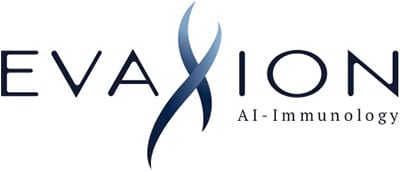
A Danish company using artificial intelligence to develop immuno-oncology therapies, Evaxion priced at the low end of its range. The company has four programs it expects to fund using the IPO raise. Its lead program EVX-01, a personal immunotherapy treatment based on the individual patient’s DNA. Researchers say they are using an AI platform to get the body’s own immune system to find and kill the cancer tumor cells by applying an algorithm to select mutated proteins most likely to generate an immune response. Evaxion says it can deliver the therapy about 7 weeks after taking a patient’s blood sample. A Phase I/IIa readout in bladder cancer, malignant melanoma and NSCLC is expected in the first half of 2021. In addition to immuno-oncology, Evaxion is studying a vaccine program against bacterial diseases, called EVX-B1. IPO funding will help this candidate get through preclinical and CMC activities and to a hopeful regulatory filing in the second half of 2022.
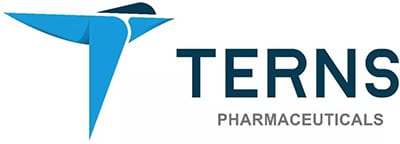
Terns pulled in an $87.5 million Series C earlier in January but is now aiming to take advantage of the hot NASH market by going public, pricing at the high end of its range and raising an upsized $128 million. The company has seen a sharp rise since being founded with the help of Eli Lilly, which provided seed funding and licensed the company’s three NASH candidates, back in 2018. Terns has sent two of those programs to the clinic and is aiming to mainly fund a Phase IIa trial for lead candidate TERN-101 through completion. The program is expected to produce topline Phase IIa data in the second half of 2021 and is a liver-directed non-bile acid farnesoid X receptor (FXR) agonist being tested on 96 patients. While Terns faces competition from other NASH players like Intercept and AbbVie, which snagged an FXR agonist in the Allergan buyout, the company thinks its candidate’s safety profile is where it will stand out. Terns’ S-1 also detailed plans to complete a Phase I study and launch Phase II development for the program TERN-501, and to advance a third program TERN-201 through Phase Ib.
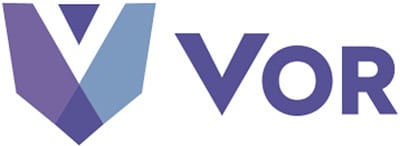
Vor priced at the high end of its range and raised an upsized $203.4 million, up from an estimated $150 million. That includes the options picked up by underwriters after the company priced. The goal for their IPO is to fund two of its programs, VOR33 and VCAR33, that it hopes can work hand in hand. VOR33 is a program of engineered hematopoietic stem cells designed to replace the standard of care in transplant settings, and once those cells have been engrafted, Vor says patients can be treated with anti-CD33 therapies like VCAR33. Vor currently has plans to start a Phase I/IIa trial for VOR33 in acute myeloid leukemia in the first half of this year, with funds from the raise also going toward preclinical development for myelodysplastic/myeloproliferative neoplasms. For VCAR33, a CD33-directed CAR-T cell therapy licensed from the NIH in November, Vor is seeking to fund a Phase I/II trial from launch through completion in adult AML. The biotech has significant backing, including a combined $152 million between two fundraising rounds with both co-led by RA Capital. Vor was founded by Columbia oncologist and Pulitzer Prize-winning author Siddhartha Mukherjee, who chronicled the promise and price of the first generation of CAR-T therapies for the New Yorker.

TCR pioneer Immunocore, pricing above its range with an upsized $258 million raise, revealed a promising set of pivotal interim data for their lead program tebentafusp back in November, and is aiming to use the IPO funds to finish a Phase III for the candidate in frontline cases of metastatic uveal melanoma. Researchers gathered 378 patients for the late-stage study, pitting the compound against investigators’ choice. There’s no approved therapy for this indication, so the choice tends to be between Keytruda or Yervoy, with some patients opting for dacarbazine instead. At the first planned interim readout for the intent-to-treat, all-comers patient population, Immunocore registered a hazard ratio of 0.51. Jallal told Endpoints News at the time that not only was this the first positive late-stage survival data for a TCR, but also the first positive Phase III snapshot for a bi-specific in a solid tumor, as well as the first such match-up against checkpoints. The company had previously raised more than $450 million, including a then-record European round of $320 million for their Series A in 2015. Immunocore was also the victim of an alleged “kickback” fraud in a scheme involving two third-party suppliers, The Times reported in late January. The company had also expected to raise an additional $15 million in private placement from the Bill and Melinda Gates Foundation at the same time as the IPO.
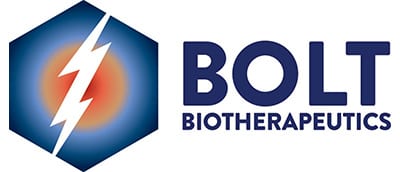
Bolt had most recently raised $93.5 million in a Series C last July and raised an upsized $230 million after originally expecting a range of $16 to $18. The main idea is one that comes from the inventor of the first cancer vaccine, with a lead program in BDC-1001 they call an immune-stimulating antibody conjugate. Whereas the vaccine process involved extracting dendritic cells, exposing them to a protein from the patients’ own tumors and reinfusing them, Bolt is trying to directly activate dendritic cells around tumors without the need for removal. If it works, the candidate would turn the environment around the tumor from an immuno-suppressive to one that could not only kill the tumors once but prevent a recurrence. BDC-1001 entered a Phase I/II trial for patients with HER2-expressing solid tumors in the first quarter of 2020. It’s currently in a dose-escalation stage, and is expected to move into Phase II dose expansions this year. After the first data emerge from that study, the company will move into trials specifically for gastric and breast cancer.
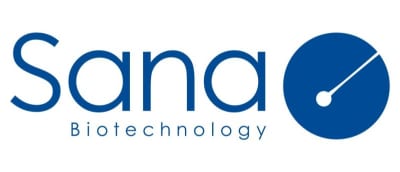
Harr’s team at Sana originally penciled in a $150 million raise, but they ended up with a much bigger figure, resulting in a roughly $4.6 billion valuation. Sana also sold all of its available options, taking its total raise about $90 million higher than when it first priced. That scale, which marked the highest market cap in history for a biotech without any programs in the clinic, has drawn comparisons to another Flagship startup in Moderna, which debuted at a $7.5 billion valuation and has soared on the backs of its Covid-19 vaccine to reach north of $50 billion. Sana’s lofty raise is based solely on the company’s animal data and the track records of its investors. As laid out in its S-1, Sana’s long-term goals are “to control or modify any gene in the body, to replace any cell that is damaged or missing, and to markedly improve access to cellular and gene-based medicines.” The company expects to file its first INDs in 2022 and 2023 and is researching a range of indications in in vivo and ex vivo settings, including non-Hodgkin lymphoma, multiple myeloma, and Type 1 diabetes. Sana has made big winners out of Bob Nelsen’s ARCH Ventures and Flagship, who will combine to own 43% of shares after the IPO closes. And they’re banking the company turns out to be a success story like Moderna — or perhaps something even bigger. The hype is real, as Sana closed up roughly 60% in its first day and a half of trading.

The lead company in the portfolio of Chris Garabedian’s fund with Perceptive, Landos did not impress on its last data dump. And since pricing at the midpoint late Wednesday night, Landos shares have since fallen about 31% from the IPO. In January, a Phase II proof-of-concept trial in its lead compound, BT-11, missed on all its primary endpoints in IBD despite “positive” signs it measured up with standard of care. Virginia Tech professor Josep Bassaganya-Riera has studied the pathway known as Lanthionine Synthetase C-Like 2 (LANCL2) for more than a decade, and BT-11 aims to leverage this research. Landos is preparing a Phase III trial for later this year, seeking to evaluate maintenance of clinical remission after a year following the 12-week induction period. BT-11 is one of three Landos compounds utilizing this pathway, with lead indications in ulcerative colitis and Crohn’s disease, and Landos also has plans for BT-11 in eosinophilic esophagitis, psoriasis and atopic dermatitis. The company has advanced a second program into the clinic in IBD as well, launching a Phase I study of NX-13 last July.

Formerly known as Panacea, Sensei had penciled in a $100 million raise for their bacteriophage-based cancer therapies and pulled in an upsized raise. Sensei is one of a few players applying the bacteriophages in the cancer space, though they’ve been studied for decades. Their lead candidate, SNS-301, is being studied in combination with Merck’s Keytruda for squamous cell carcinoma of the head and neck. The Phase I/II trial had enrolled 11 patients as of Dec 10, and 7 of the 10 evaluable patients saw some form of disease control. That included one patient with a partial response and two who achieved long-standing stable disease. Sensei expects to read out topline data by the end of 2021, which they hope will pave the way to a registration-enabling trial. This IPO push comes just a few months after Sensei raised $28.5 million in what they called a Series AA round. Sensei is also developing two preclinical candidates — SNS-401, a potential vaccine cocktail against Merkel cell carcinoma; and SNS-VISTA, an antibody-based therapeutic. With a market cap of about $640 million, Sensei shares have ticked up about 30% since pricing.

The SPAC from Brookline Capital Markets has closed a $57.5 million raise for its shell company, pricing on Jan. 29. Its syndicate includes Samuel Wertheimer, a former partner at OrbiMed.

The SPAC from Ladenburg Thalmann has closed a $57.5 million raise for its shell company, pricing on Jan. 28. Its syndicate includes the firm’s co-CEO and chairman David Rosenberg.

The SPAC from HealthCor Management and Catalio Capital Management has closed a $207 million raise for its shell company, pricing on Jan. 27. Its syndicate includes HealthCor portfolio manager Christopher Gaulin and George Petrocheilos, a co-founder at Catalio.

The SPAC from CRO and venture investor SPRIM has closed a $230 million raise for its shell company, pricing on Jan. 26. Its syndicate includes SPRIM’s managing partner Michael Shleifer.

The SPAC from One Equity Partners has closed a $345 million raise for its shell company, pricing on Jan. 22. Its syndicate includes the firm’s operating partner Todd Bradley.

The SPAC from SCP & CO has closed a $230 million raise for its shell company, pricing on Jan. 22. Its syndicate includes the firm’s managing directors Scott Feuer and Bryan Crino.

The SPAC from Hoth Therapeutics CEO Robb Knie has closed a $57.5 million raise for its shell company, pricing on Jan. 20. Its syndicate includes Knie and Sundeep Agrawal.

The SPAC from independent life sciences and tech investor David Milch has closed a $275 million raise for its shell company, pricing on Jan. 15. Its syndicate includes Milch, who has been investing for over 30 years, as well as CEO William Johns and CFO Philip Baseil.

The SPAC from former Biscayne Neurotherapeutics co-founder Samuel Reich has closed a $115 million raise for its shell company, pricing on Jan. 12. Its syndicate includes Reich, who founded Biscayne in 2011 and later sold it to Supernus in 2018, as well as Jeffrey Spragens, who previously co-founded SafeStitch Medical in 2005 and served as CEO until its merger with TransEnterix in 2013.

The SPAC from Kennedy Lewis Investment Management has closed a $287.5 million raise for its shell company, pricing on Jan. 8. Its syndicate includes Kennedy Lewis partner Doug Logigian, who previously worked at Blackstone, as well as other Kennedy Lewis partners.
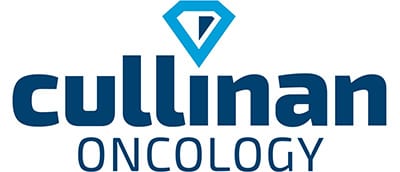
Cullinan investors aren’t buying into a single drug or platform, but instead a sort of umbrella with several different hot approaches to fighting cancer. The company works with a hub-and-spoke model much like BridgeBio, reserving individual assets in separate entities operating under the flagship. That way, execs can centralize R&D, BD and administrative work while betting on as many different approaches as possible. Cullinan has nine such projects under the umbrella, with the most recent program, known as Cullinan Amber announced last July. The whole operation’s first drug in the clinic is CLN-081 and the only targeted therapy in the mix, targeting NSCLC with EGFR exon 20 insertion mutations. Other tech approaches represented include bispecifics, NK cell-engaging antibodies, cytokine fusion protein, as well as TCR-based therapy. Cullinan filed for its IPO shortly after presenting what they called initial clinical data on CLN-081, and on the heels of announcing a $131 million Series C.
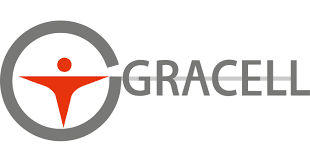
The first biotech IPO of 2021, Gracell is moving a CAR-T therapy originating from China into the public eye. Gracell was built on two technologies: FasTCAR, which promises to shorten manufacturing turnaround time to 22-36 hours; and TruUCAR, its take on allogeneic CAR-T. Additionally, the company has its own production site in Suzhou to keep the key processes in-house. In its F-1 filing, Gracell reported that GC012F, its autologous CAR-T therapy targeting both BCMA and CD19, has treated 16 patients with relapsed/refractory multiple myeloma, and that 15 achieved and maintained a response. The highest dose cohort recorded a 100% stringent complete response rate for the six evaluable patients. Though it faces tough competition from well-funded US companies like Allogene, Lyell and even Sana, Gracell is plunging full speed ahead with a registrational trial in China that just got cleared and plans to start US trials in 2021.

The SPAC from Omega Fund Management has closed a $120 million raise for its shell company, pricing on Jan. 7. Its syndicate includes Otello Stampacchia, managing director at Omega and a major investor in biotechs like Kronos and Spruce.